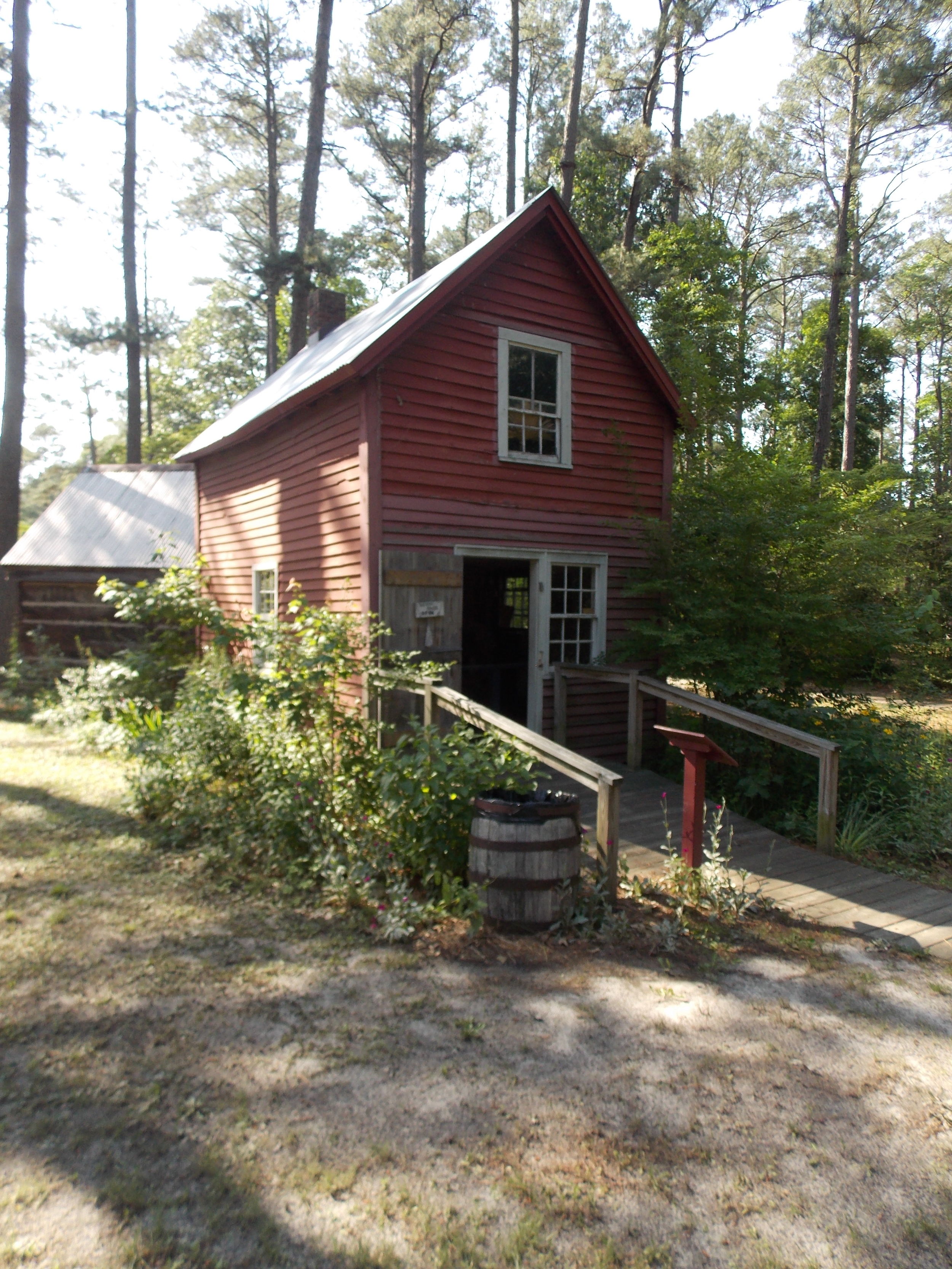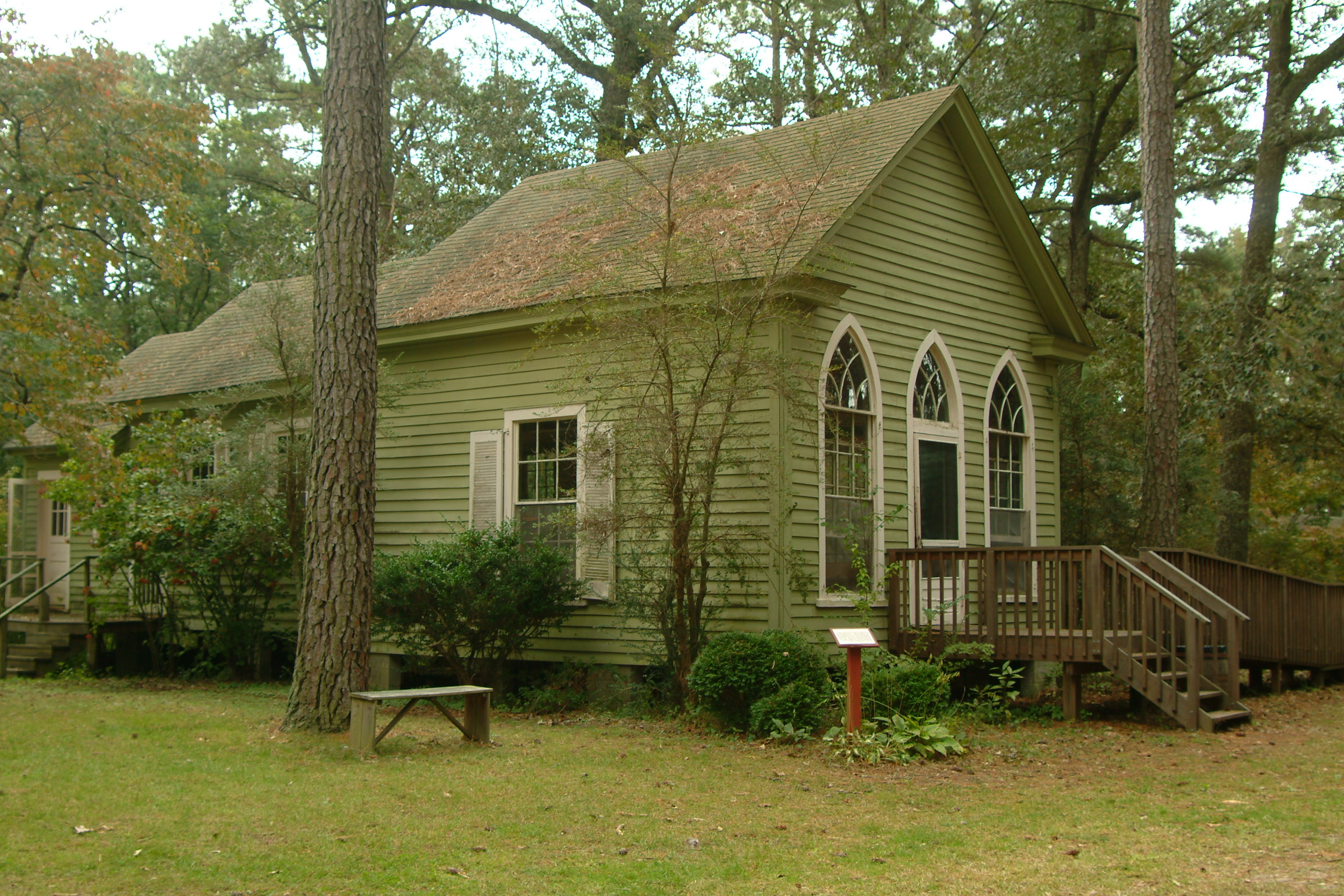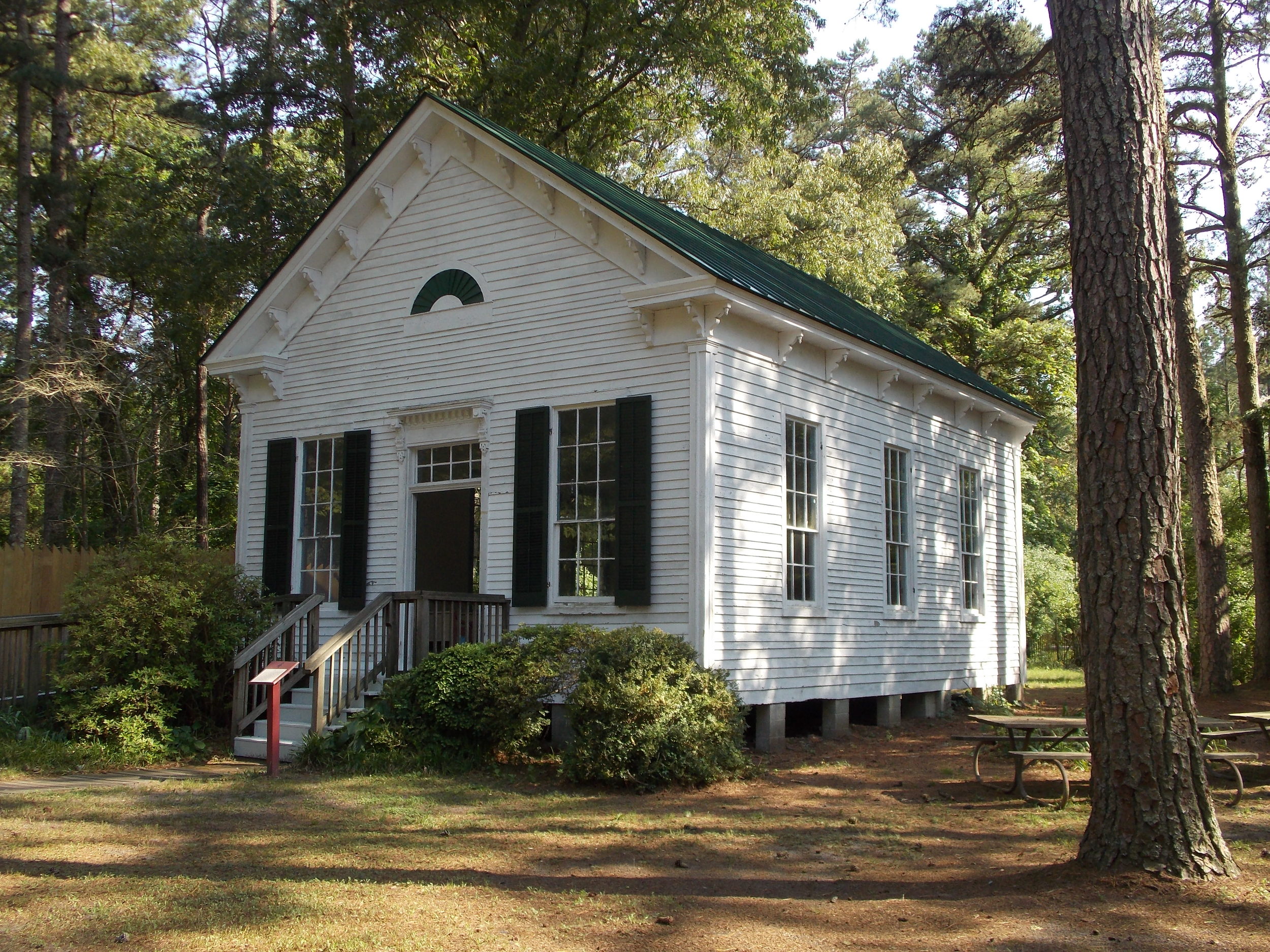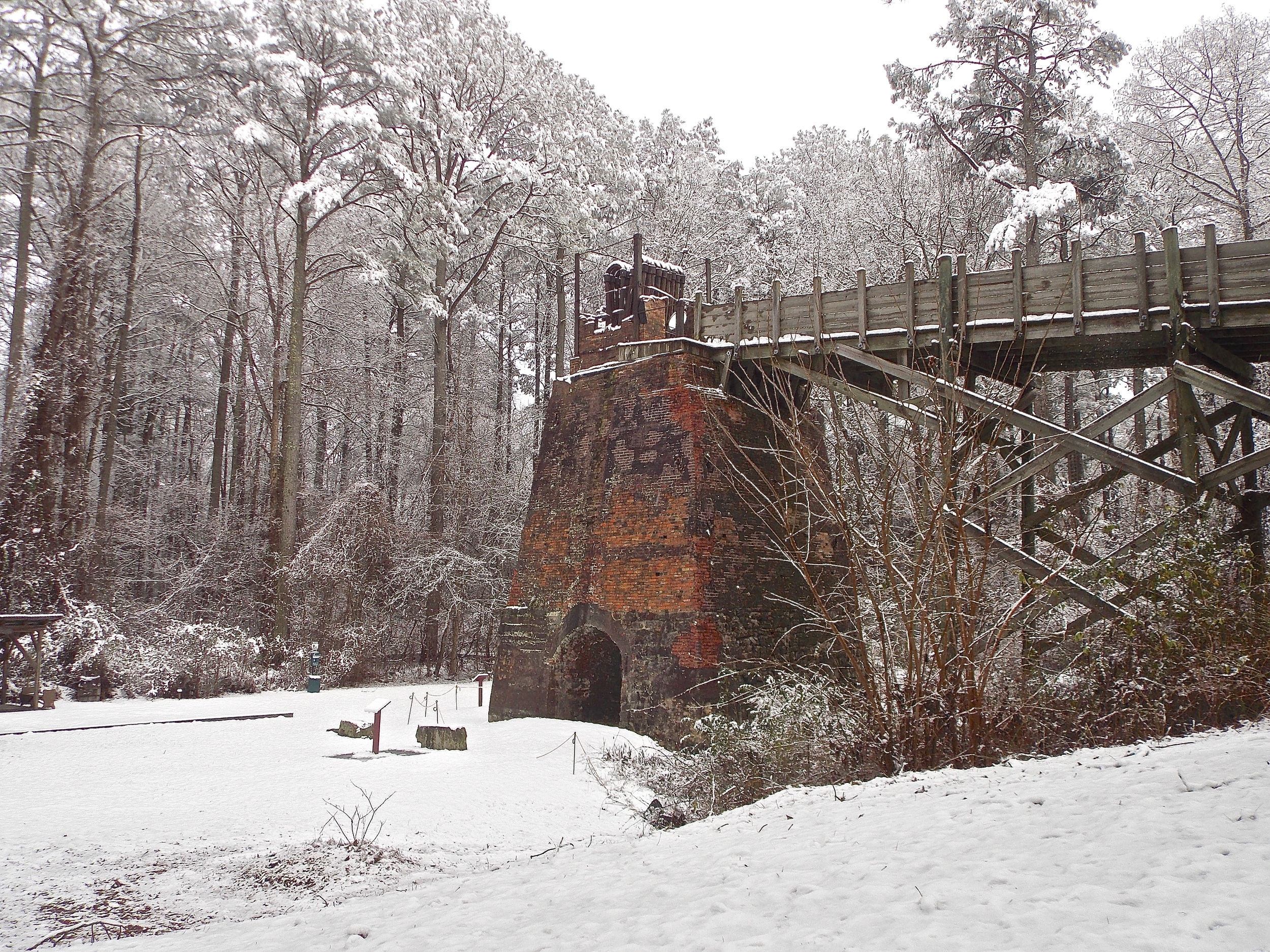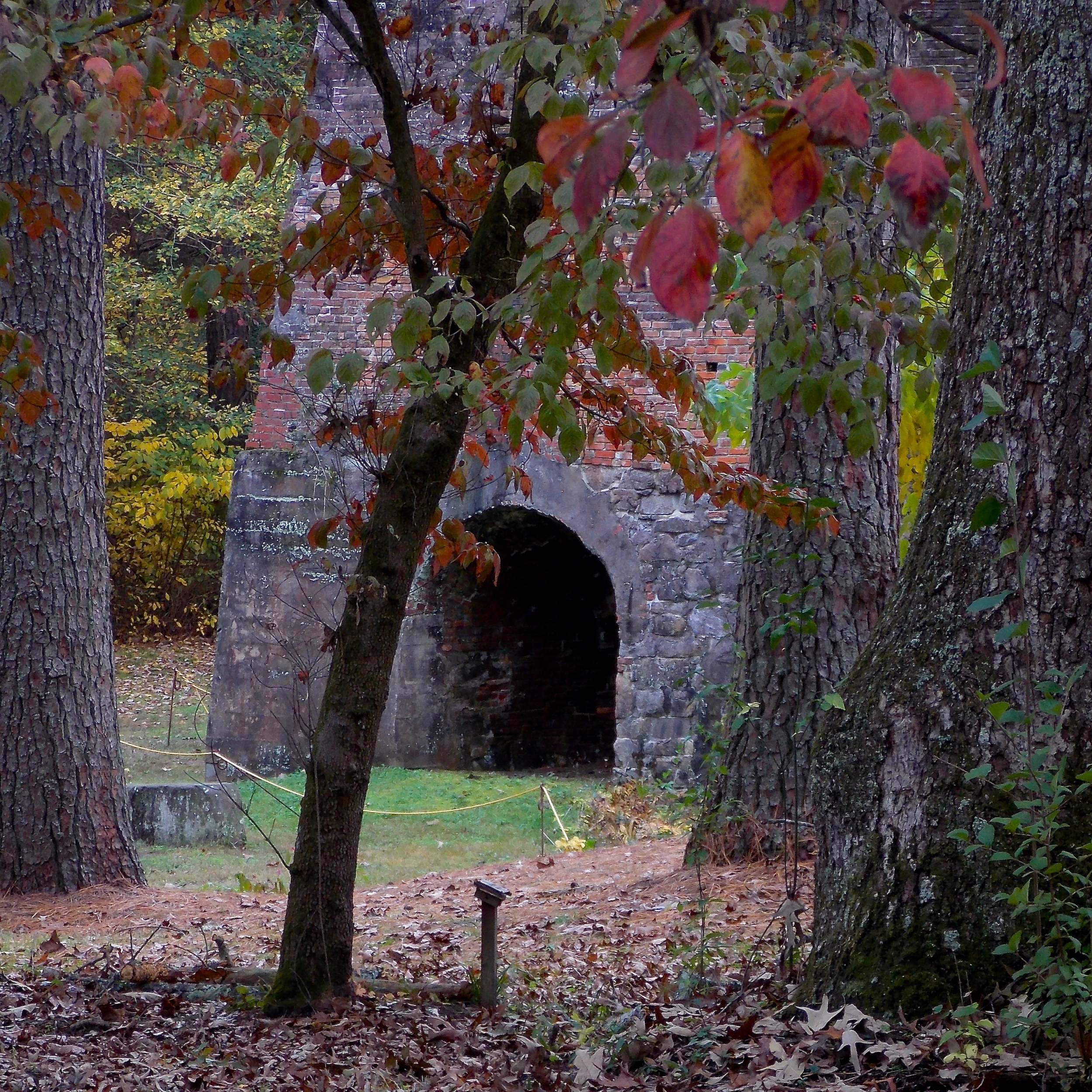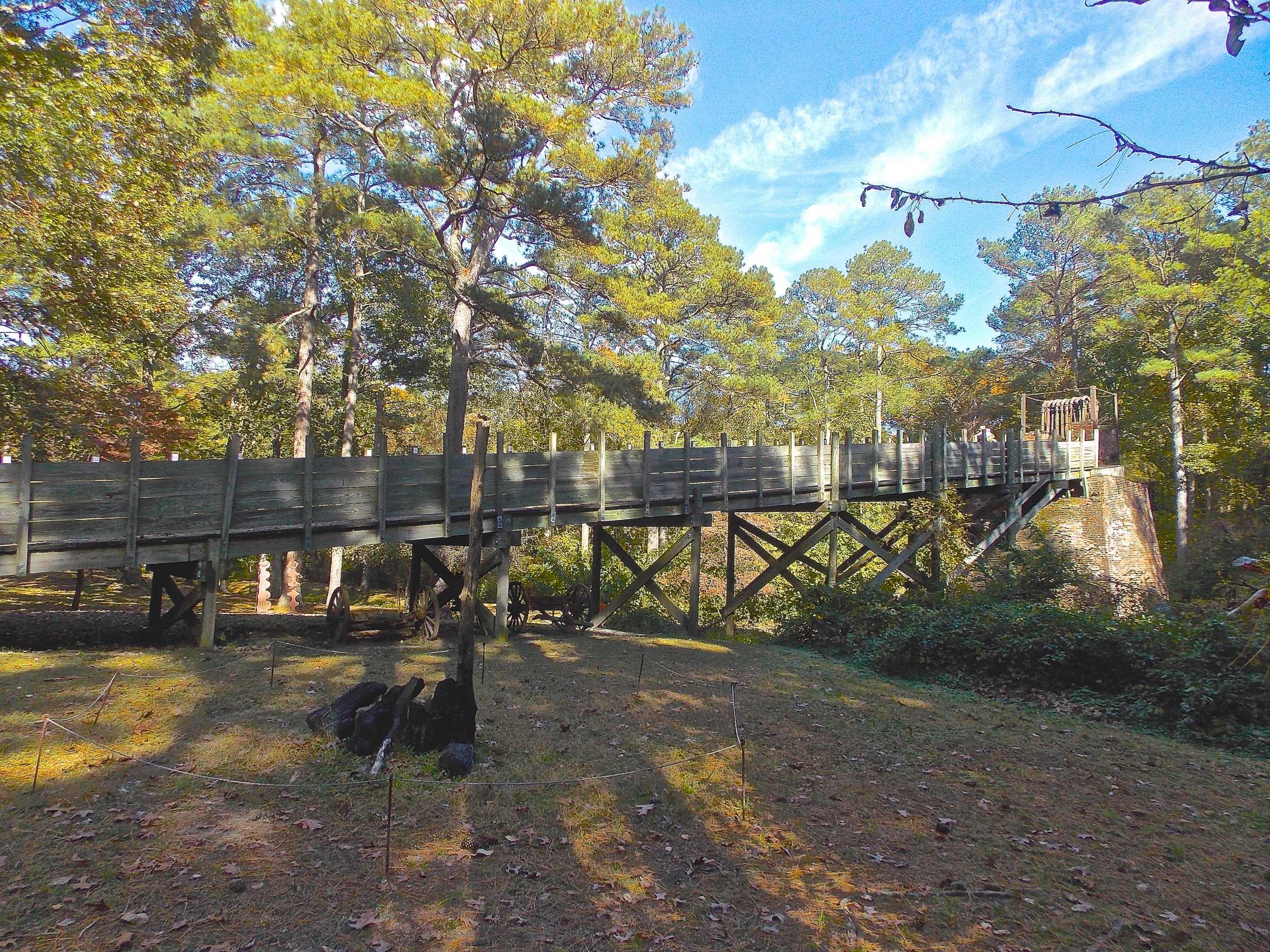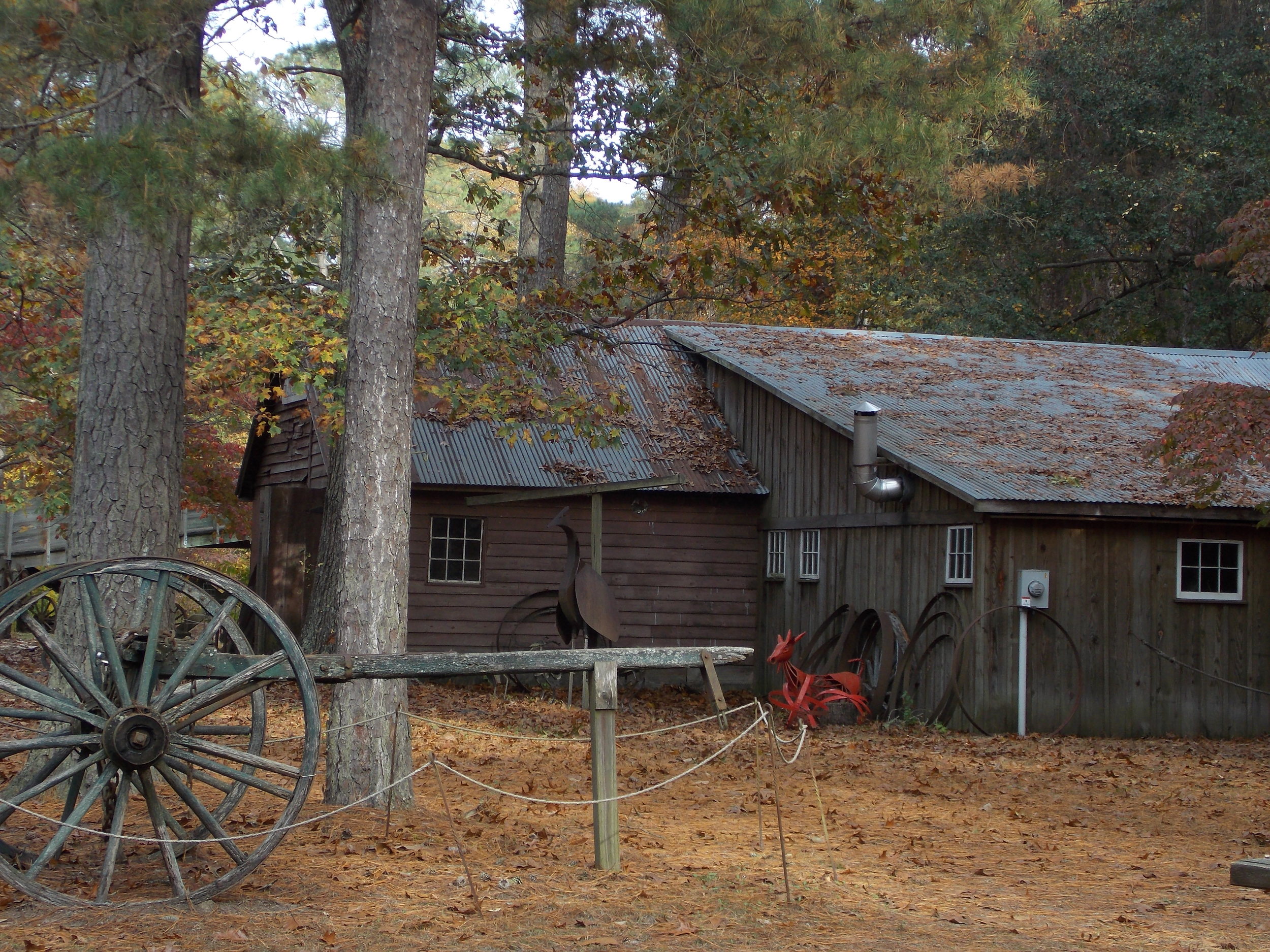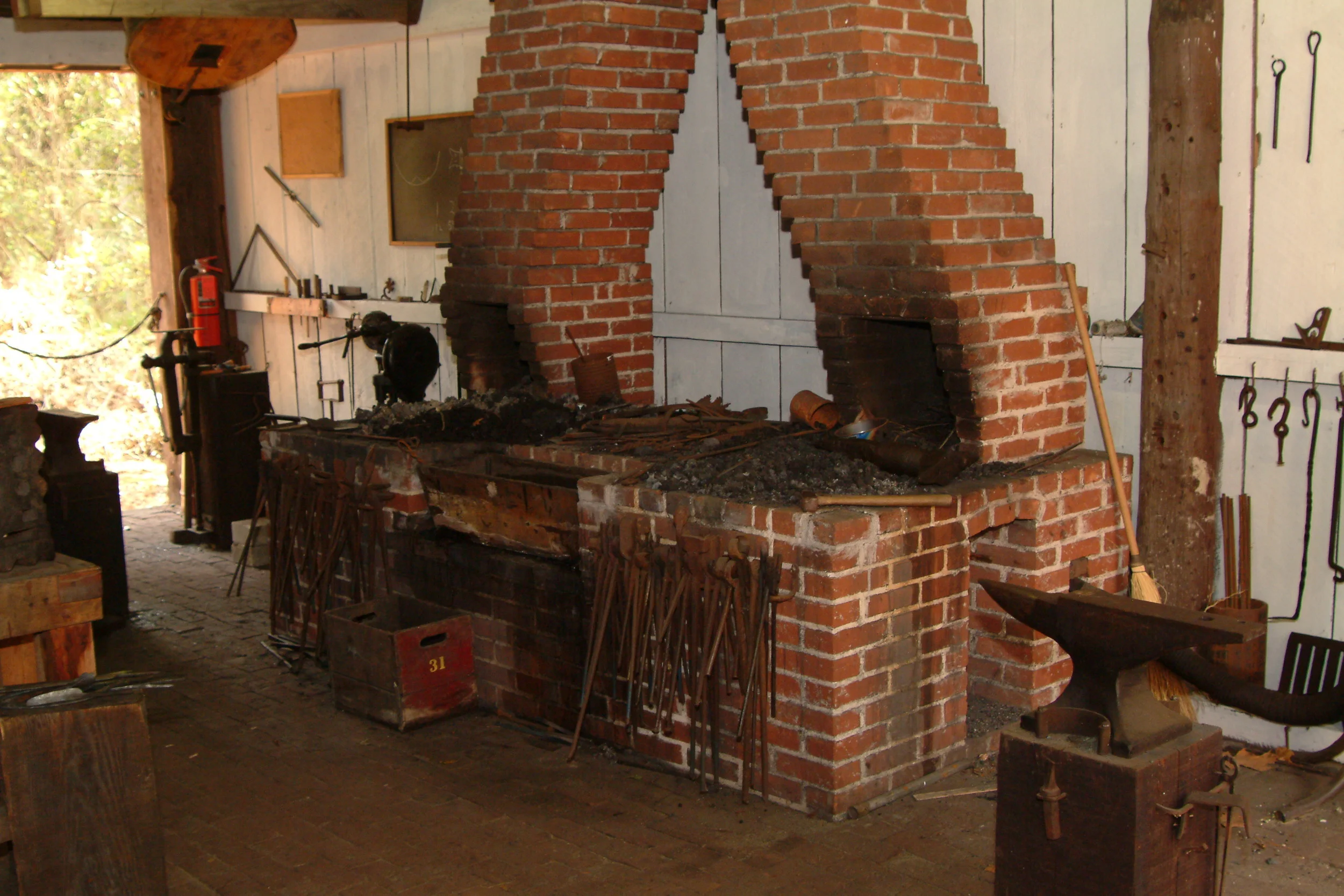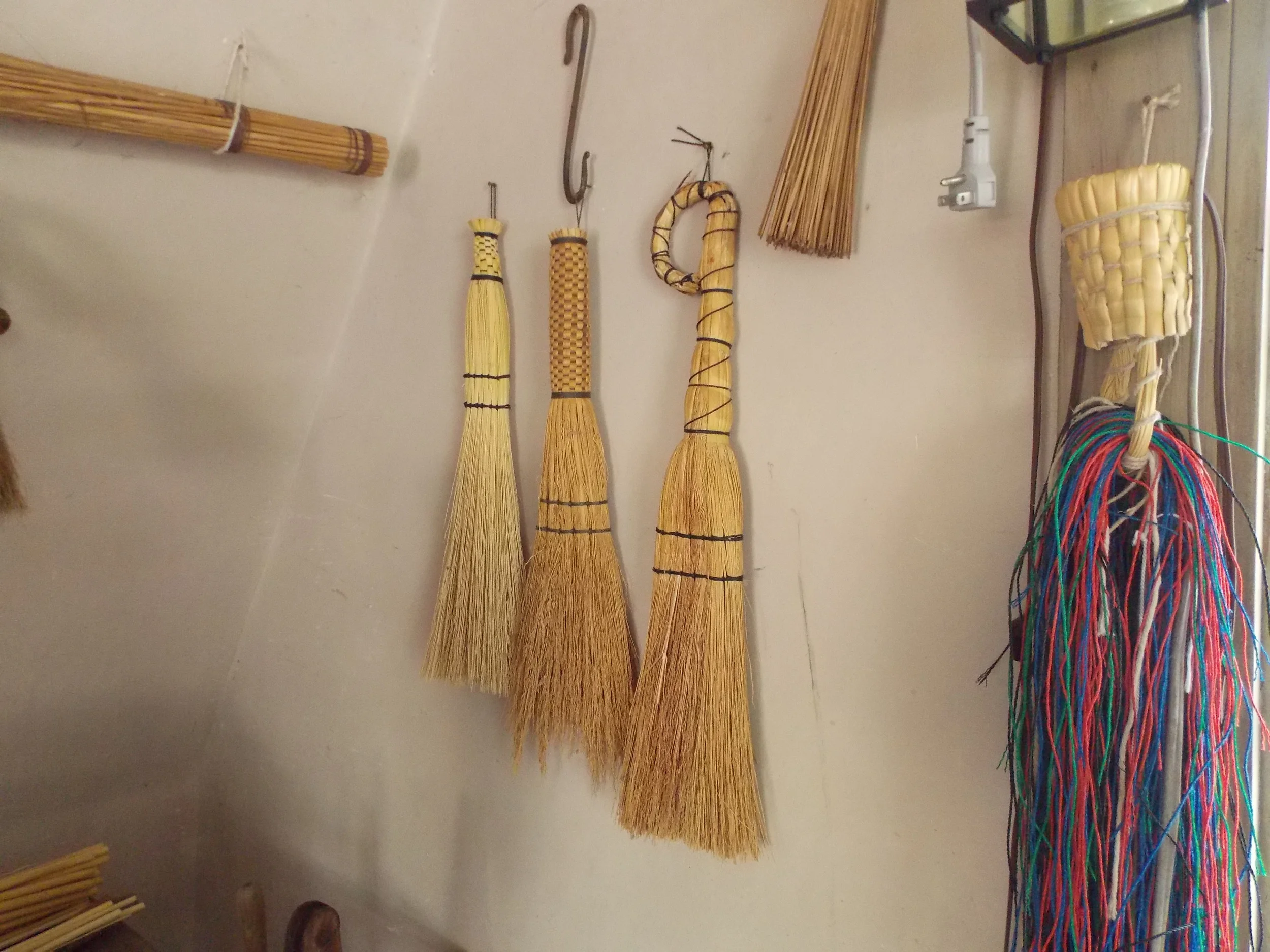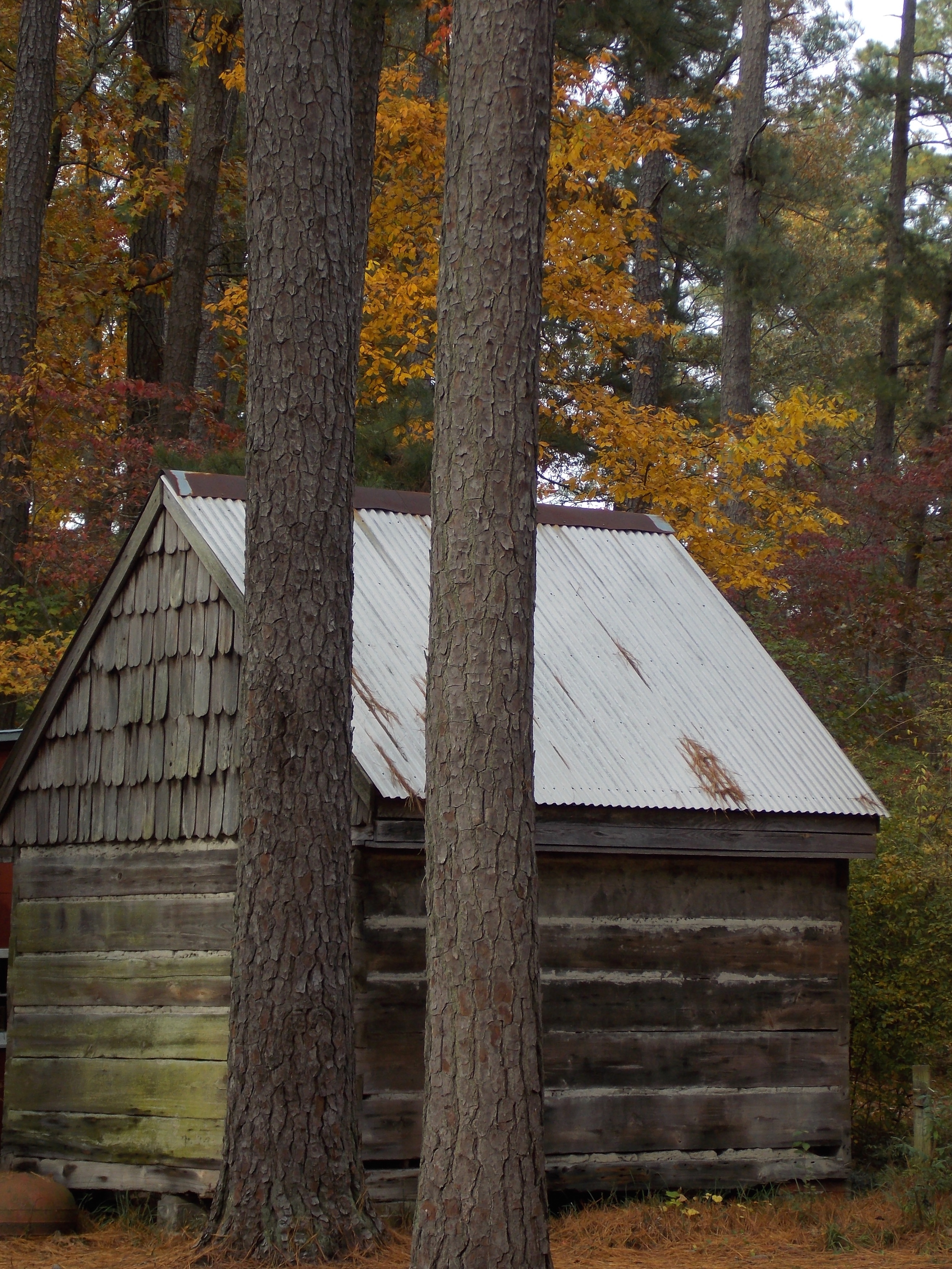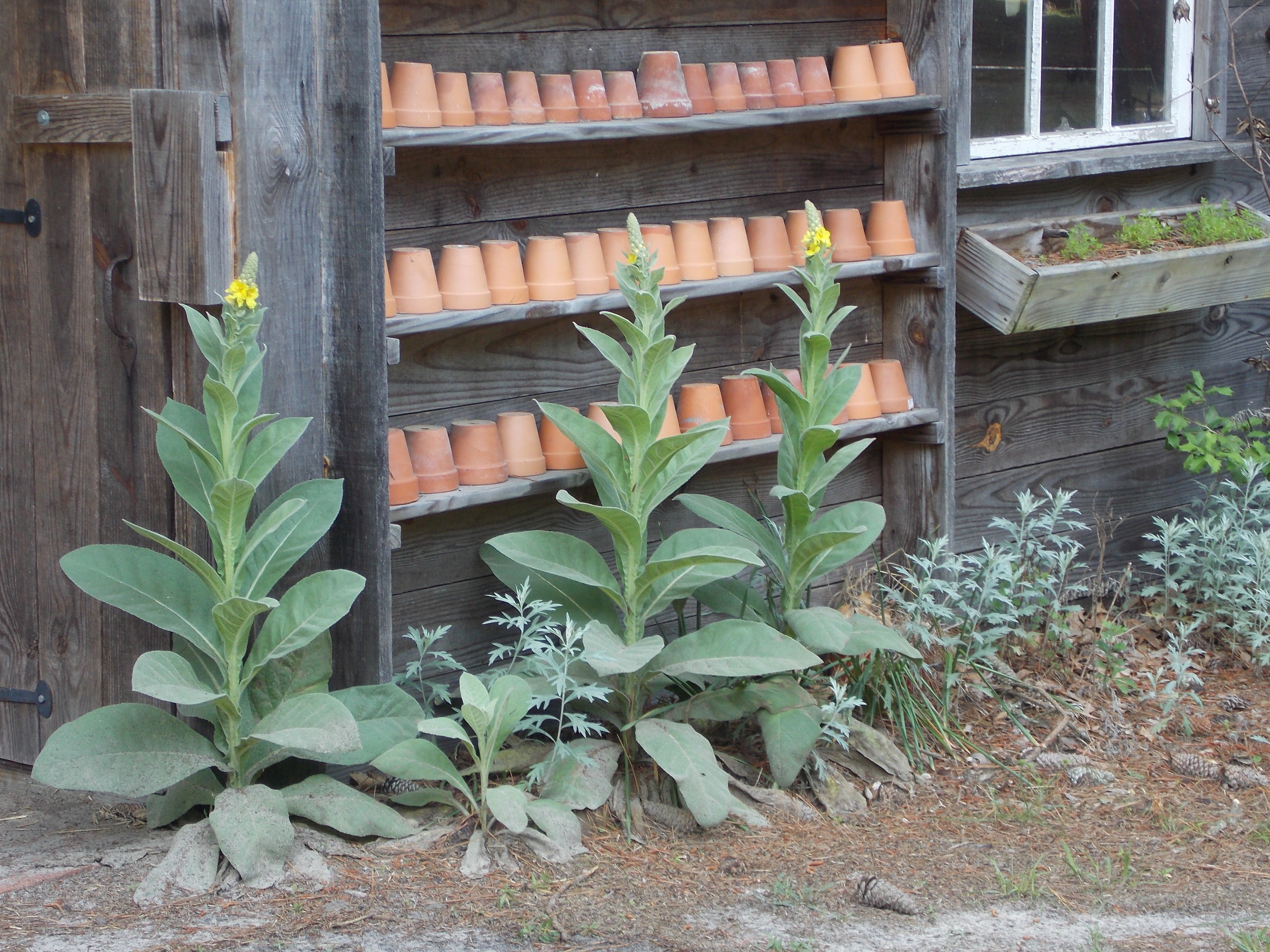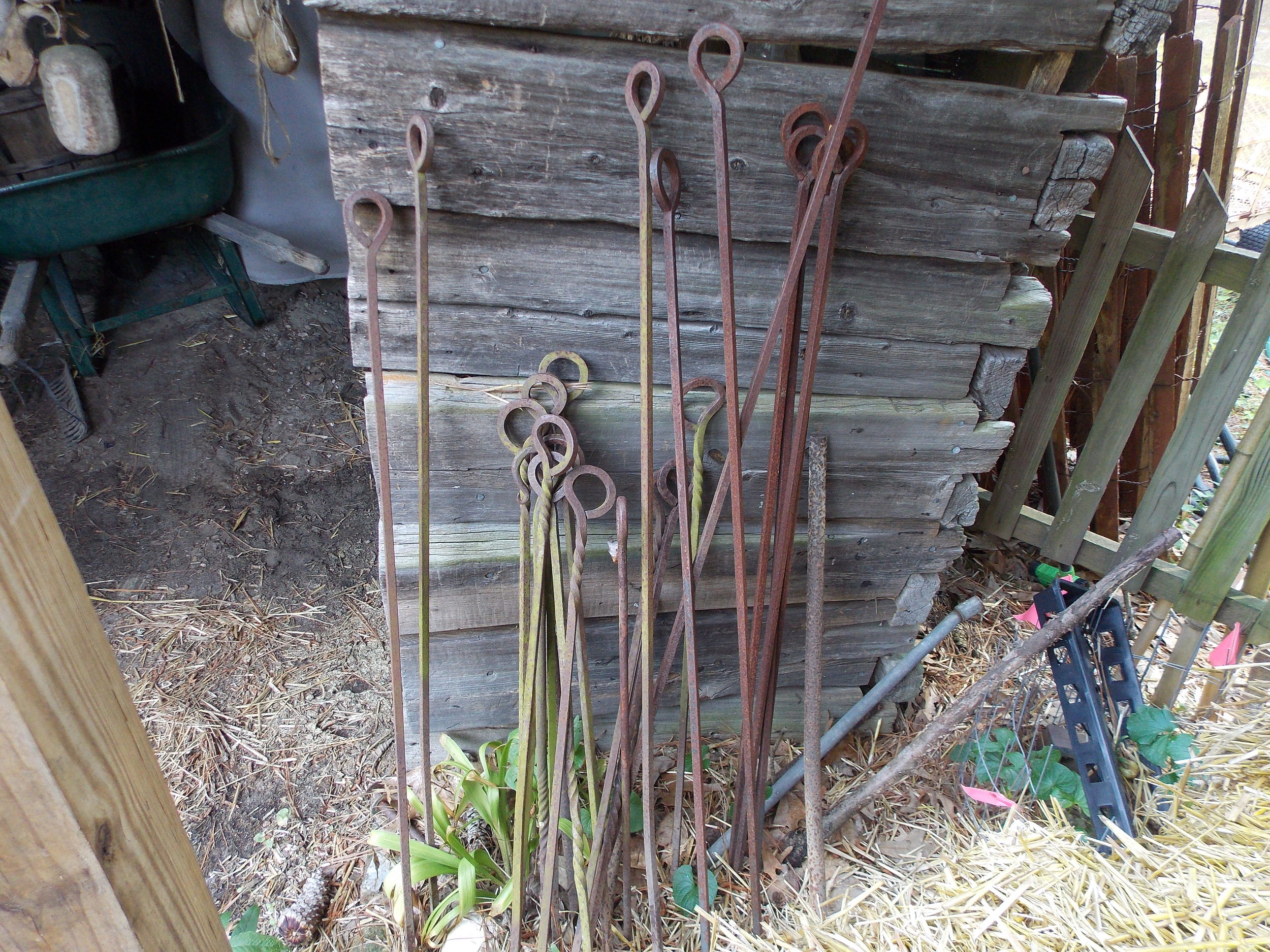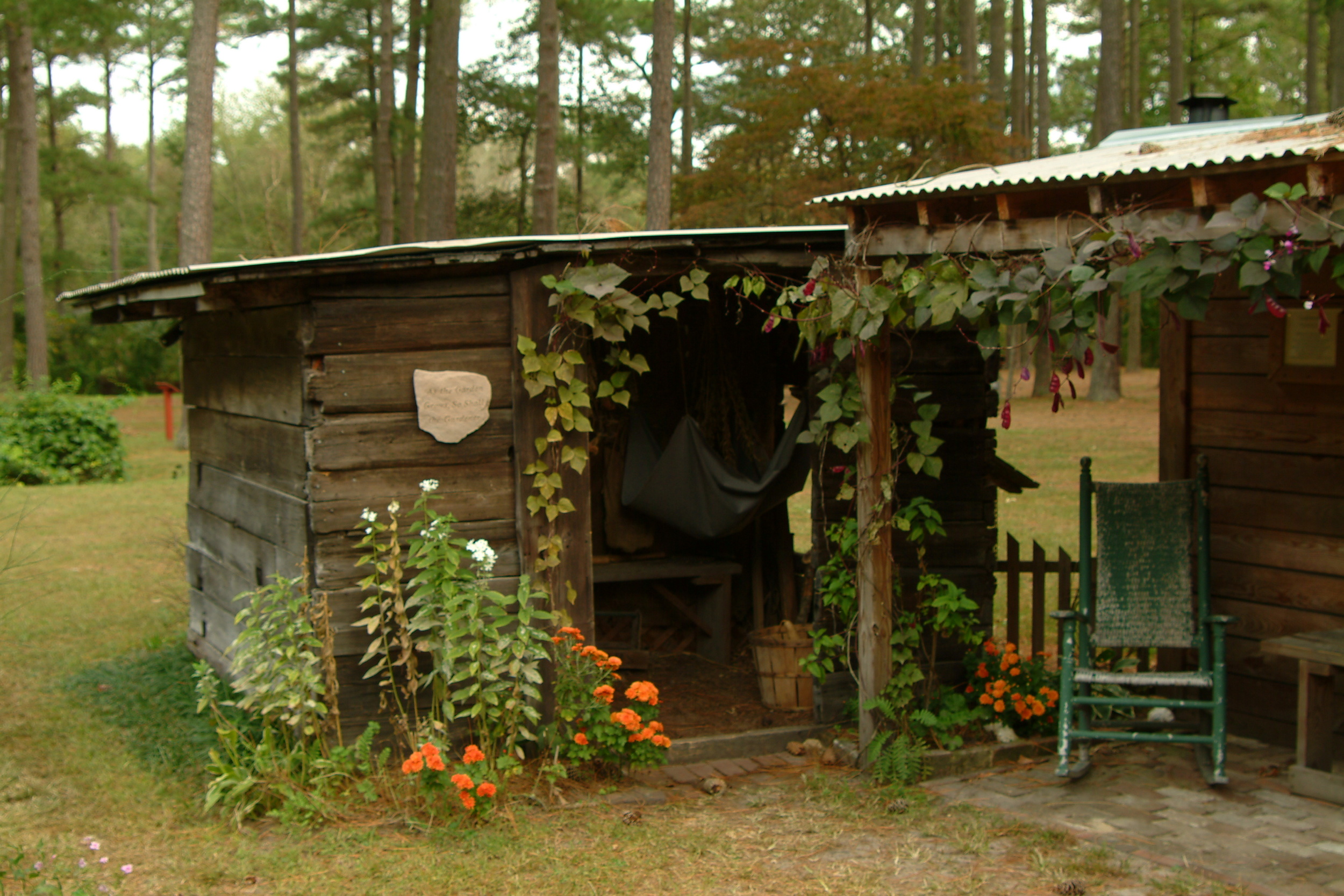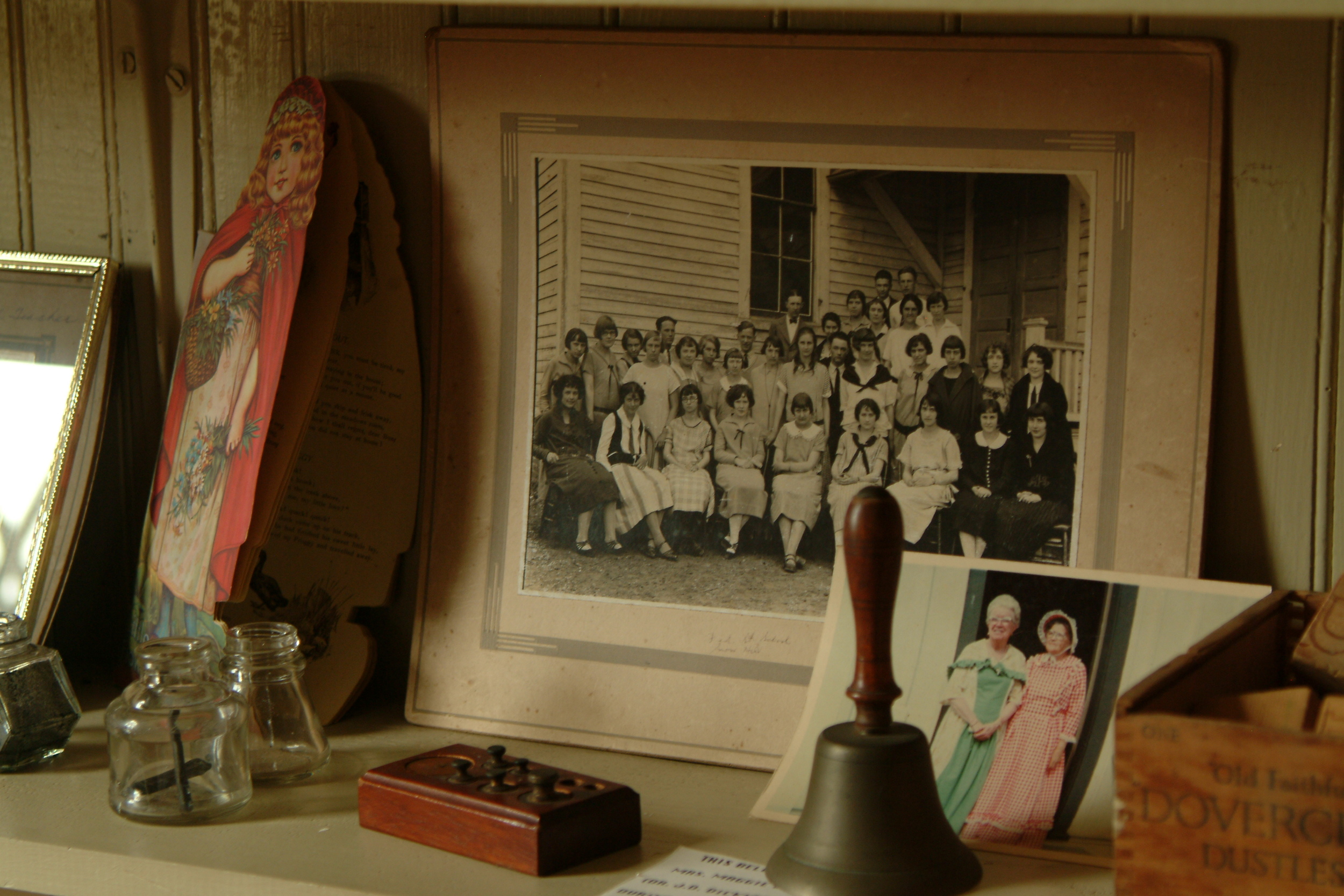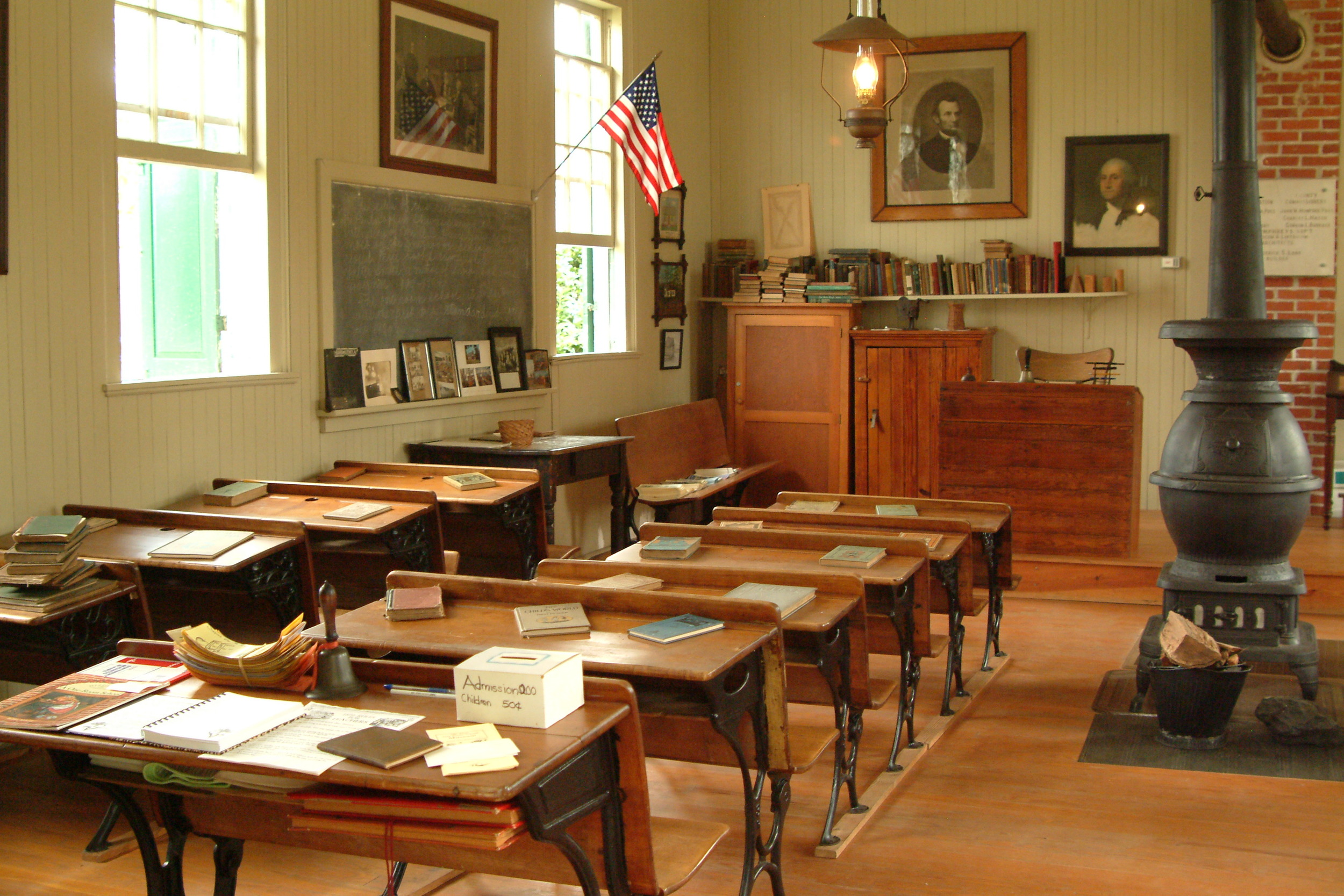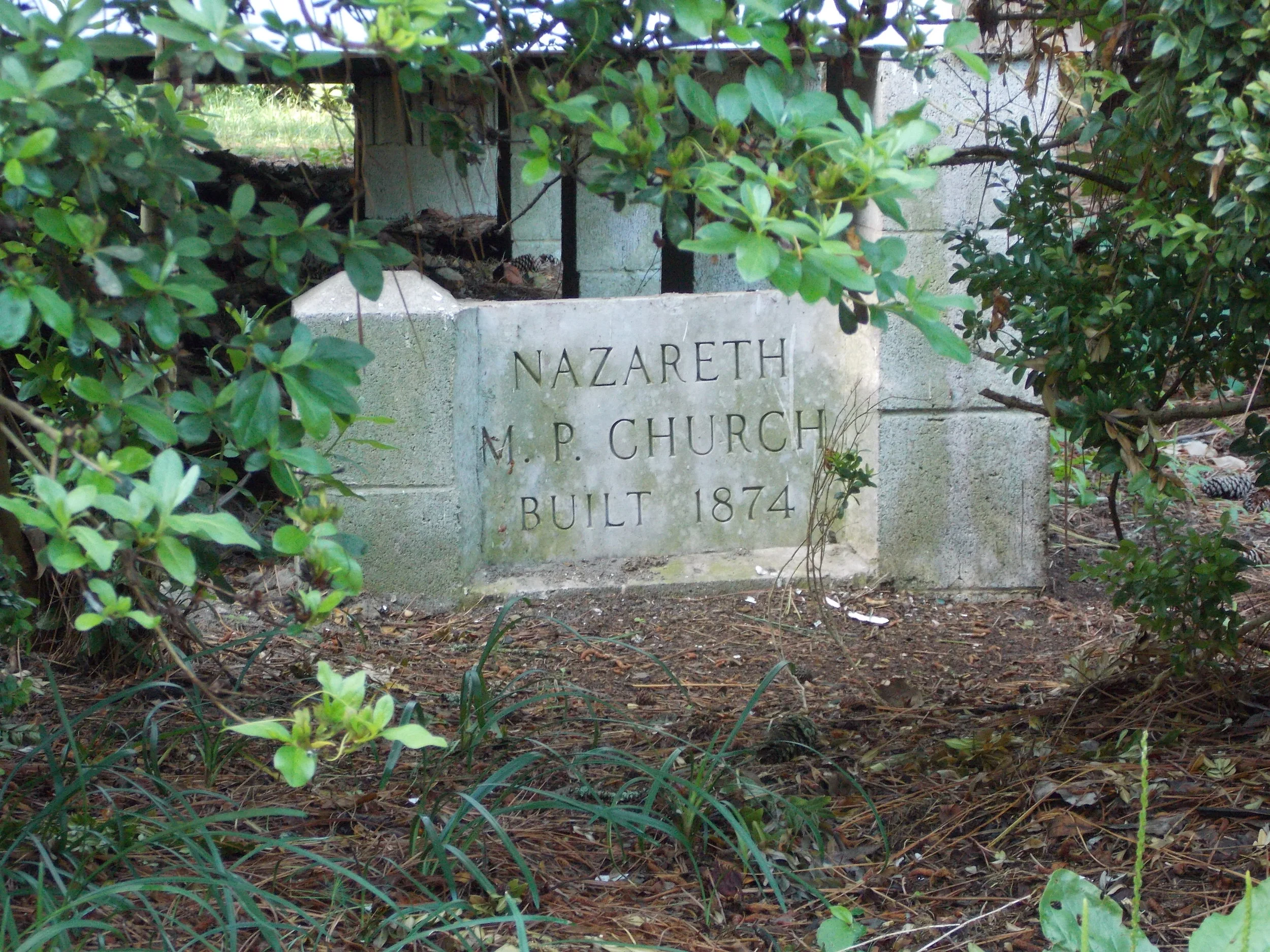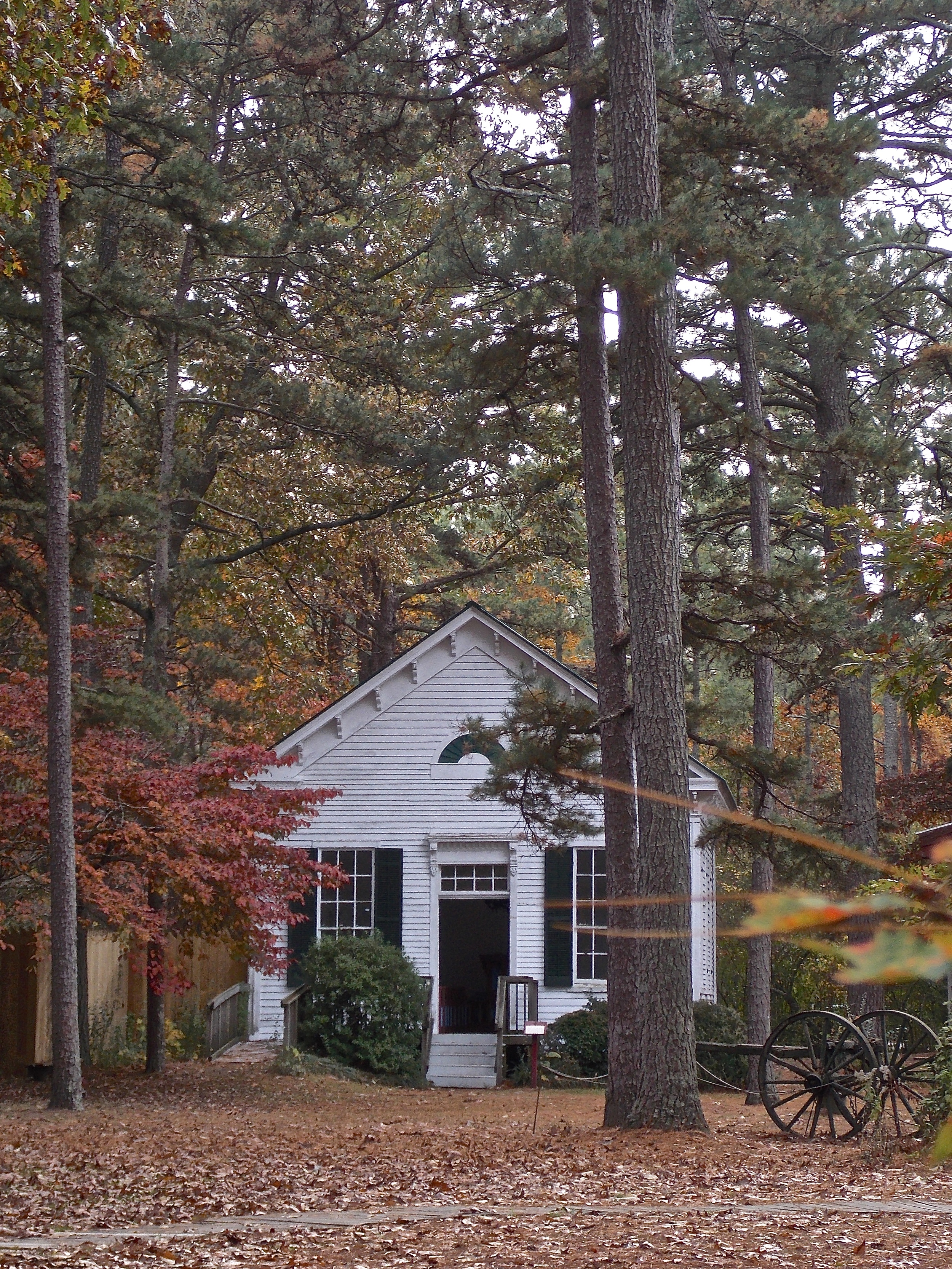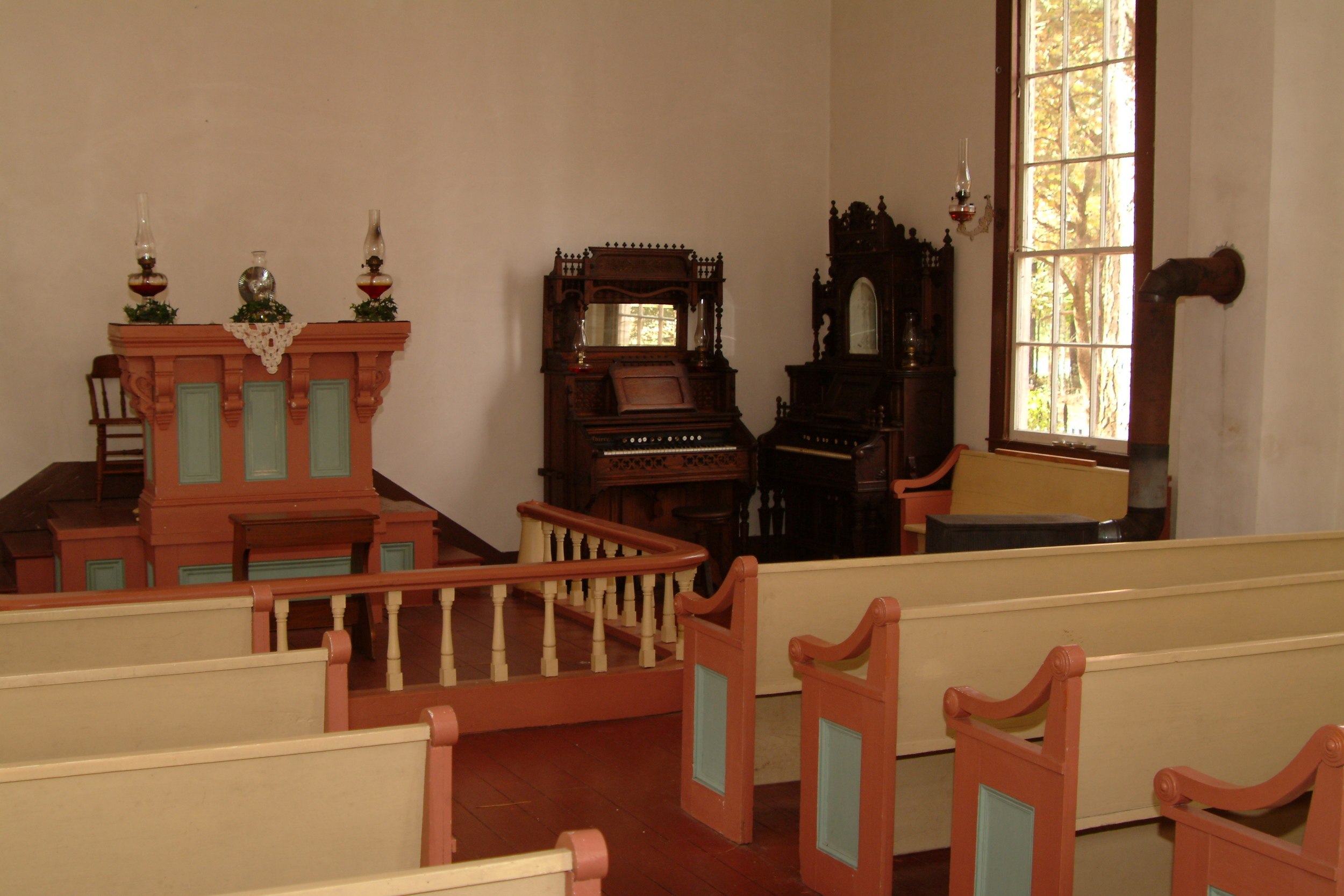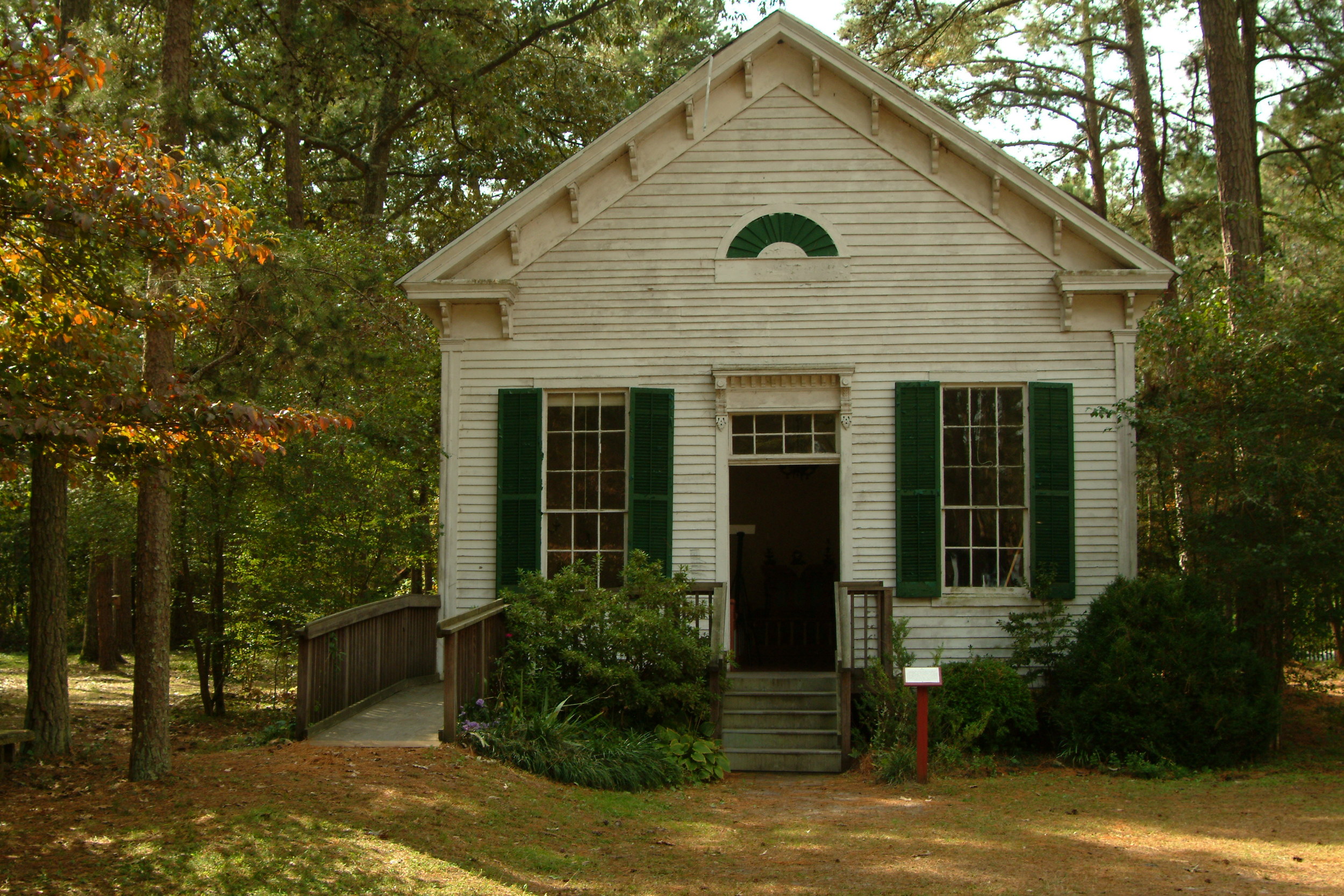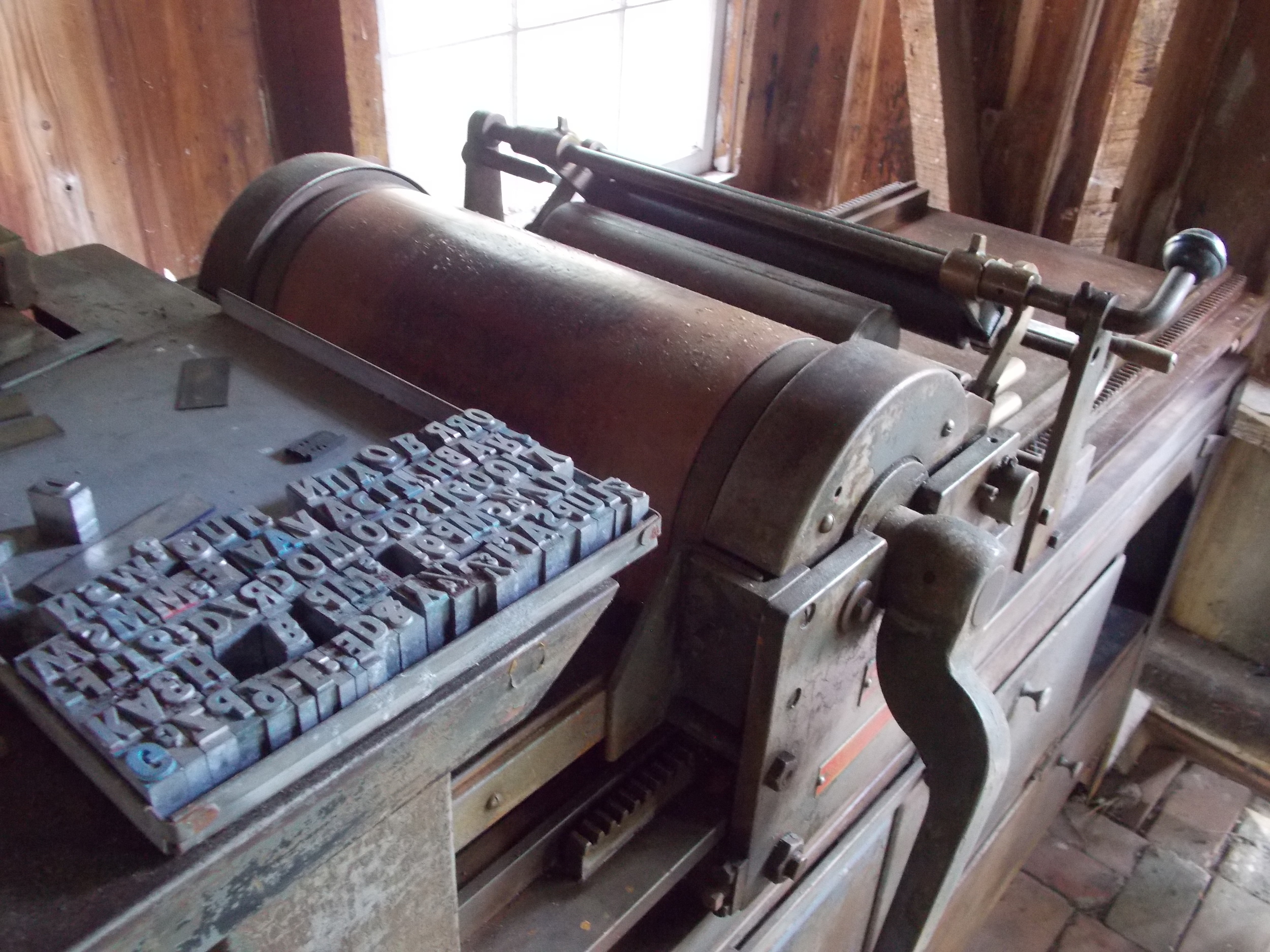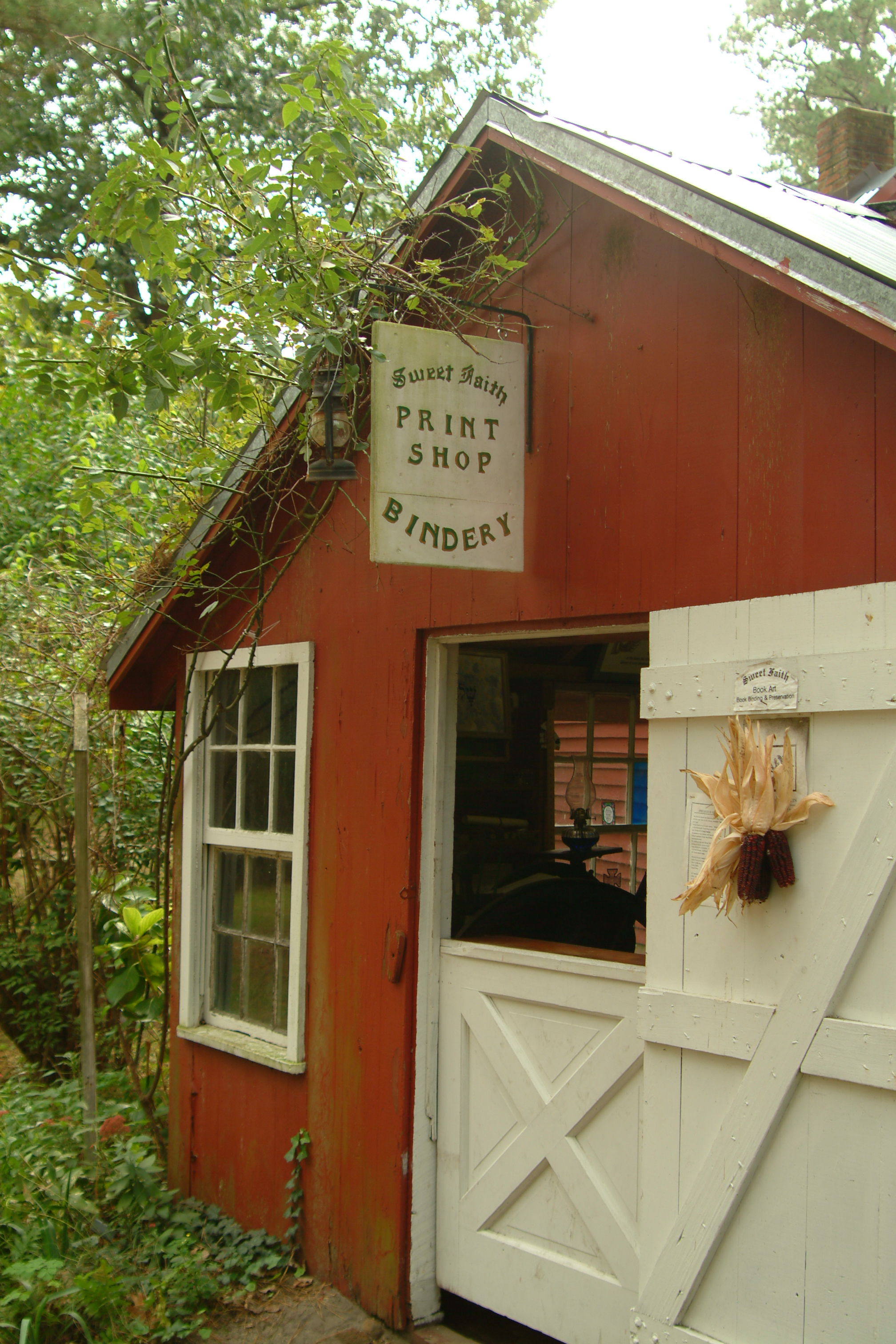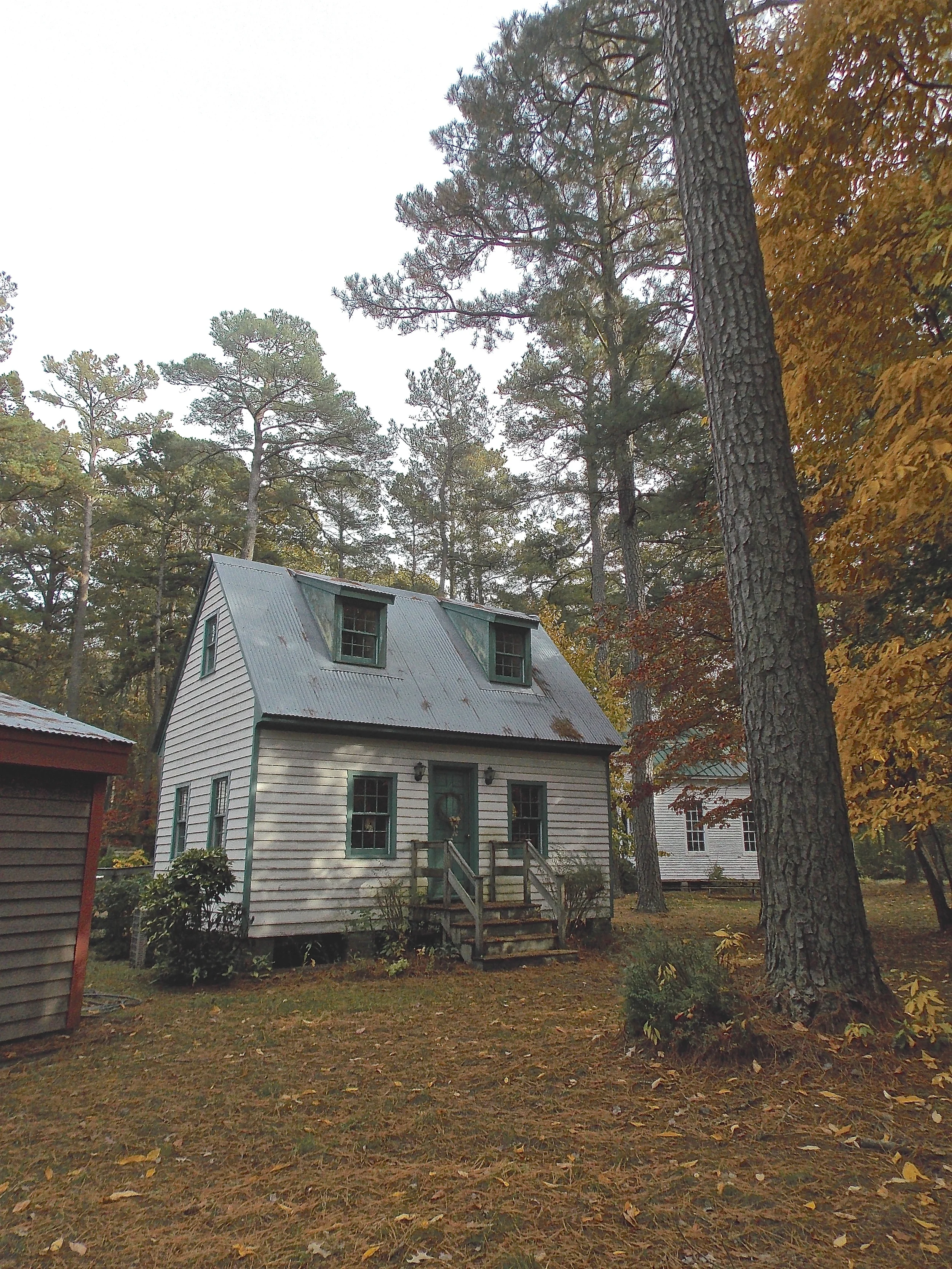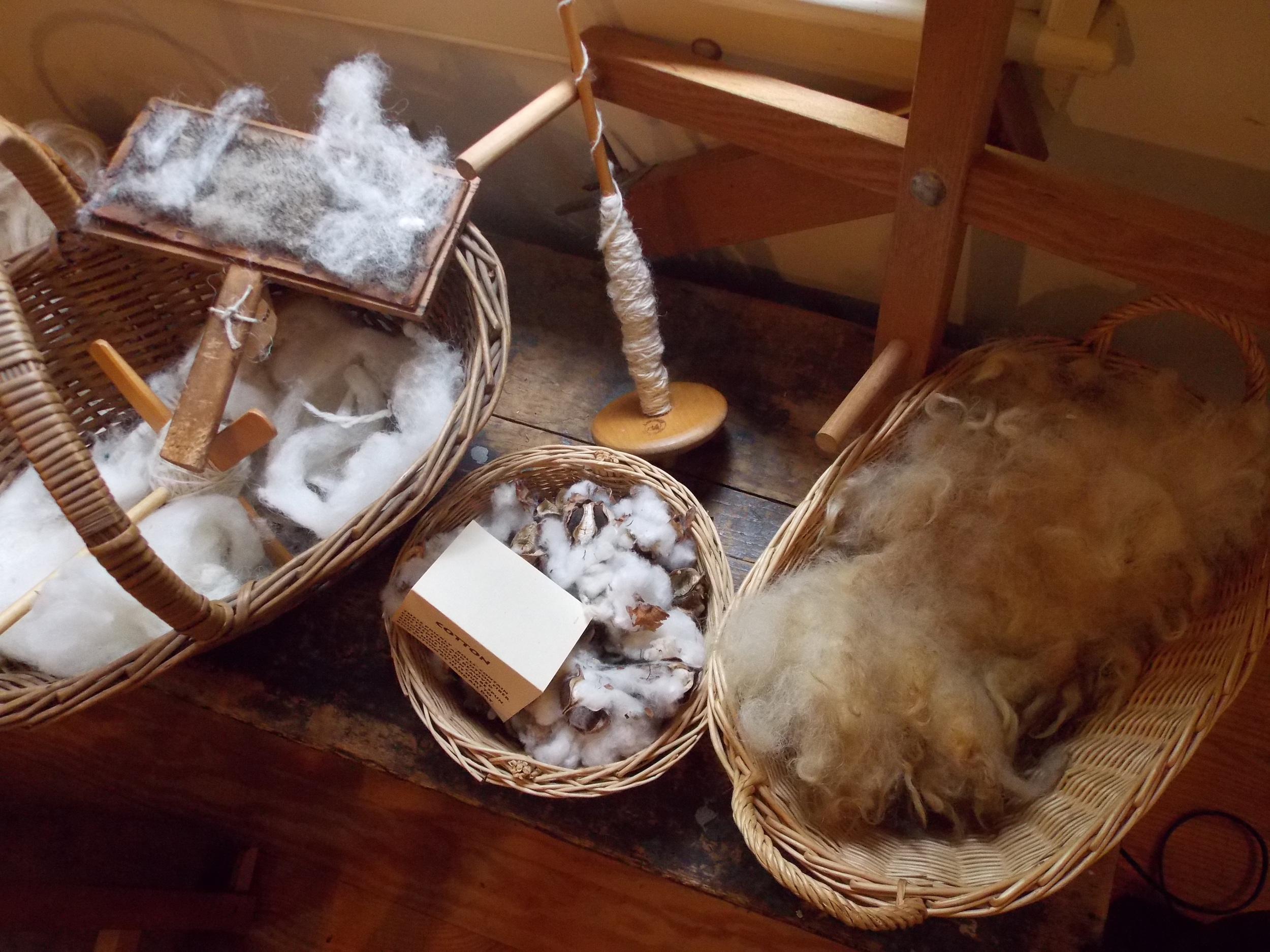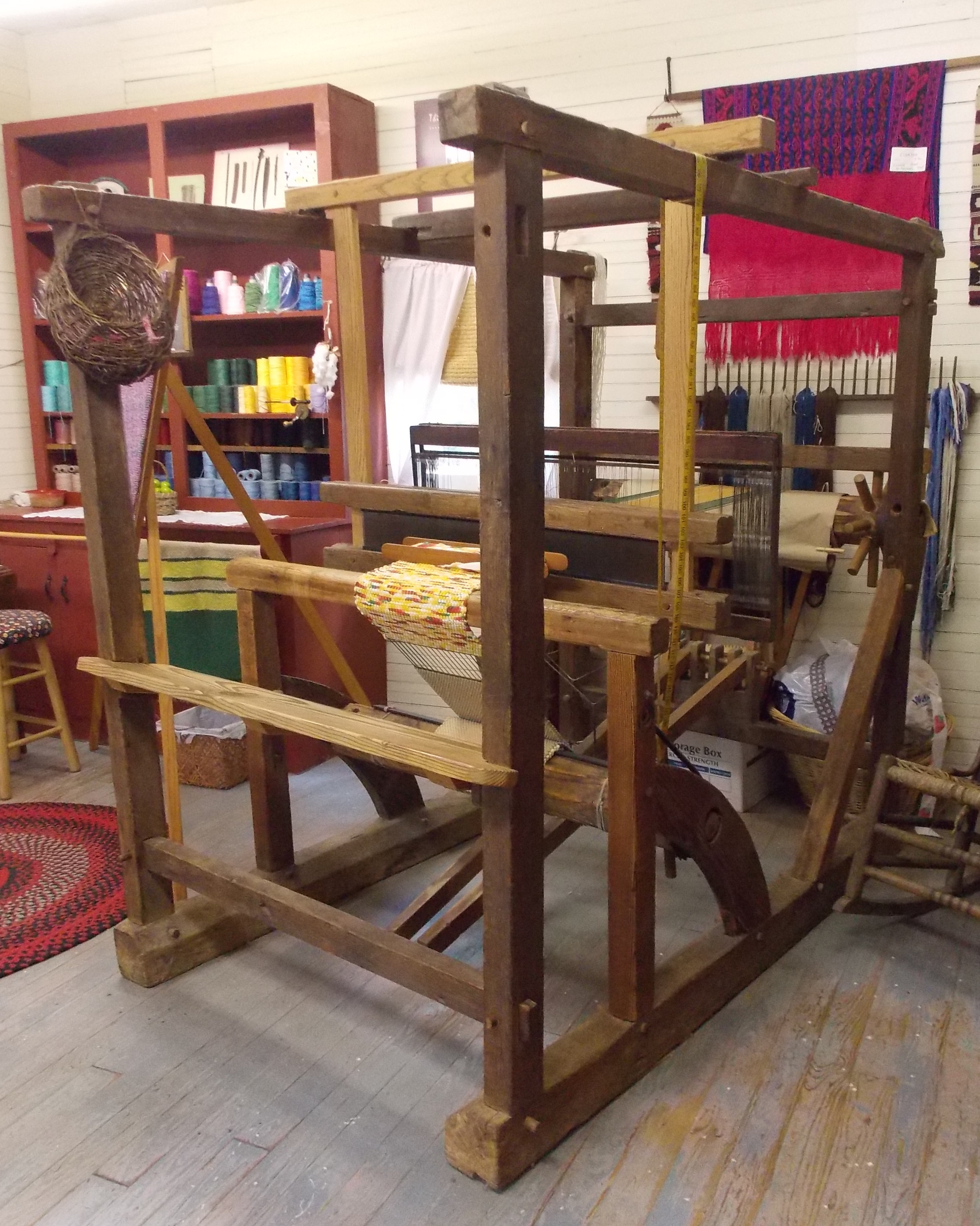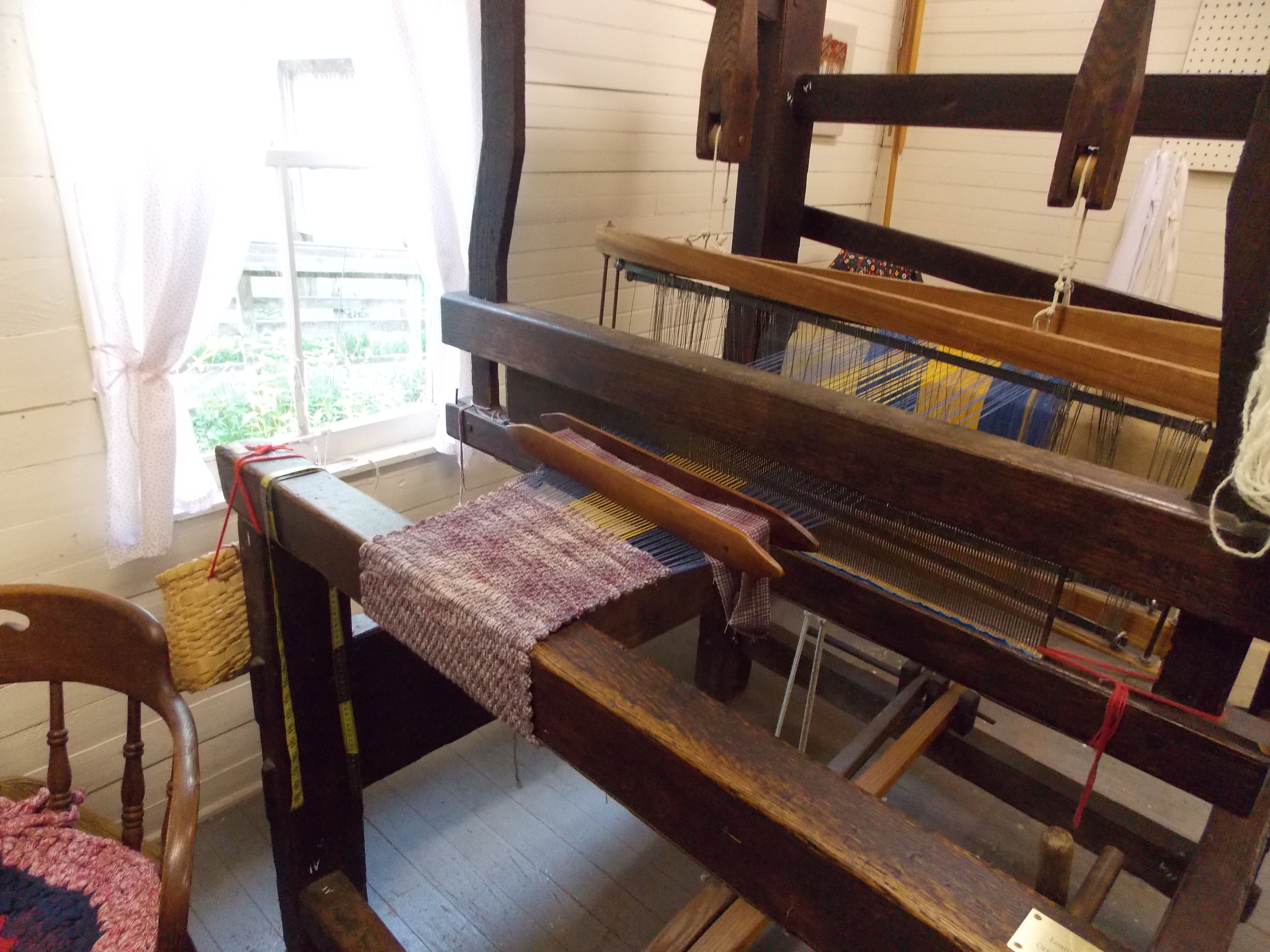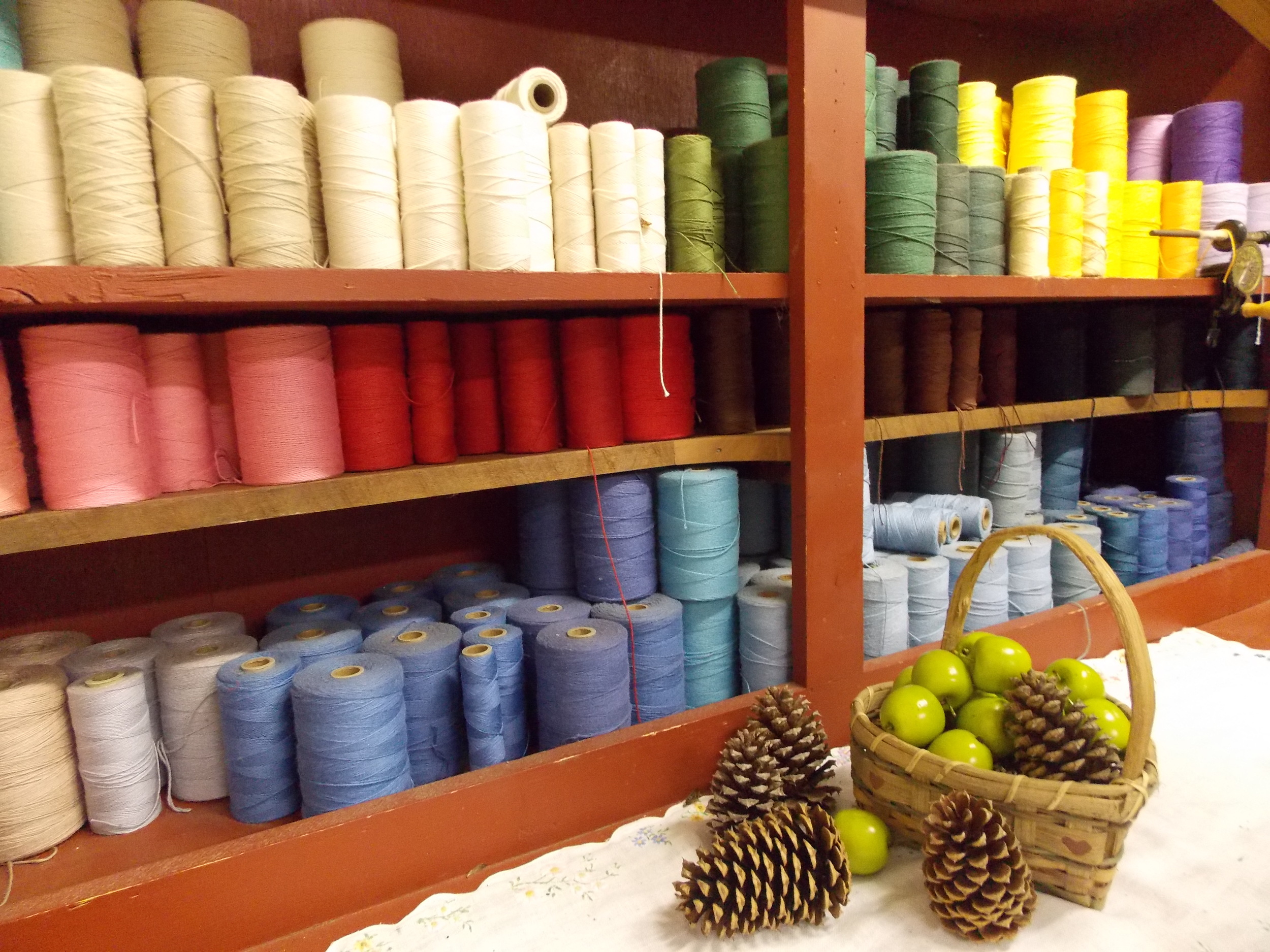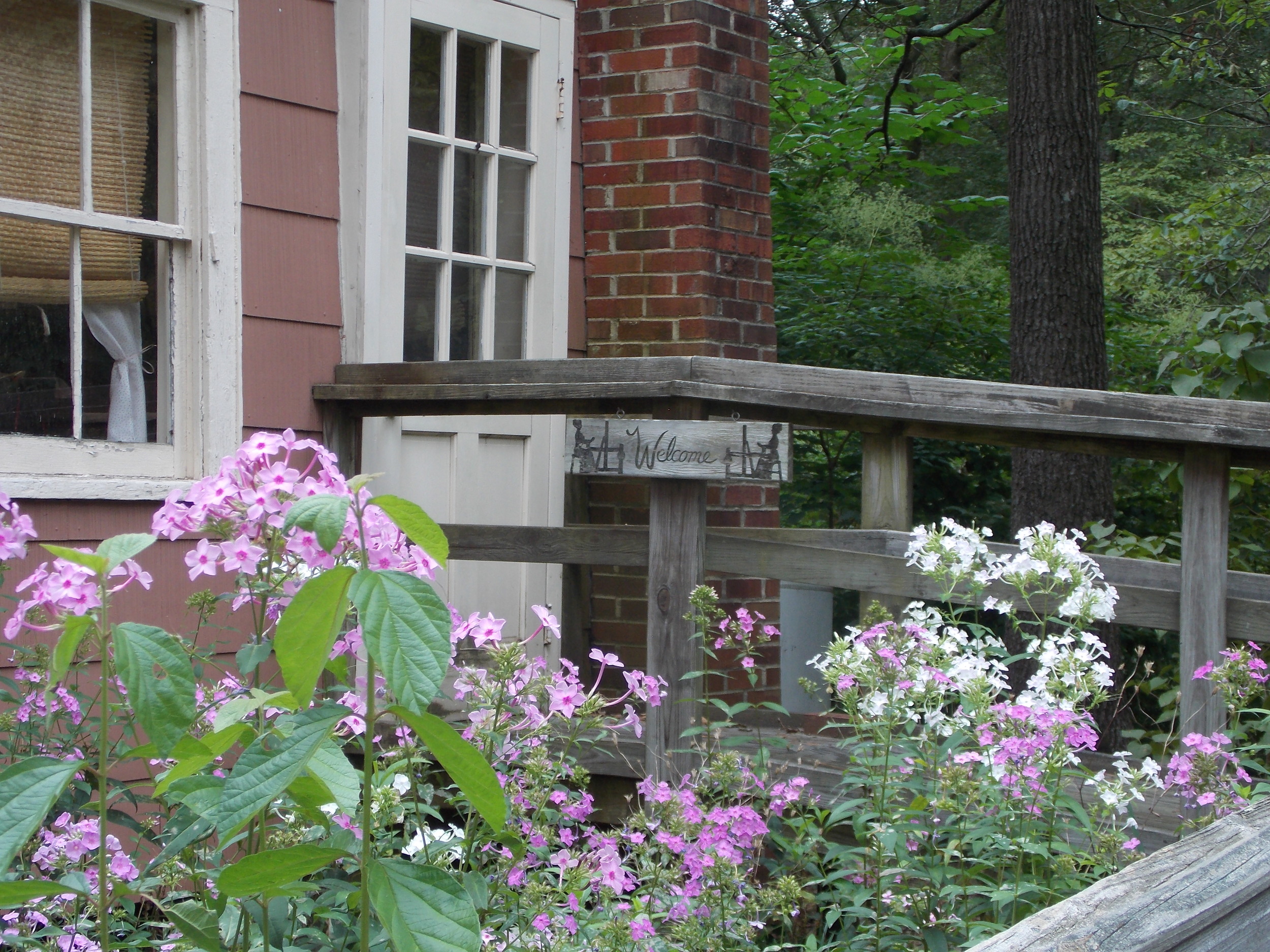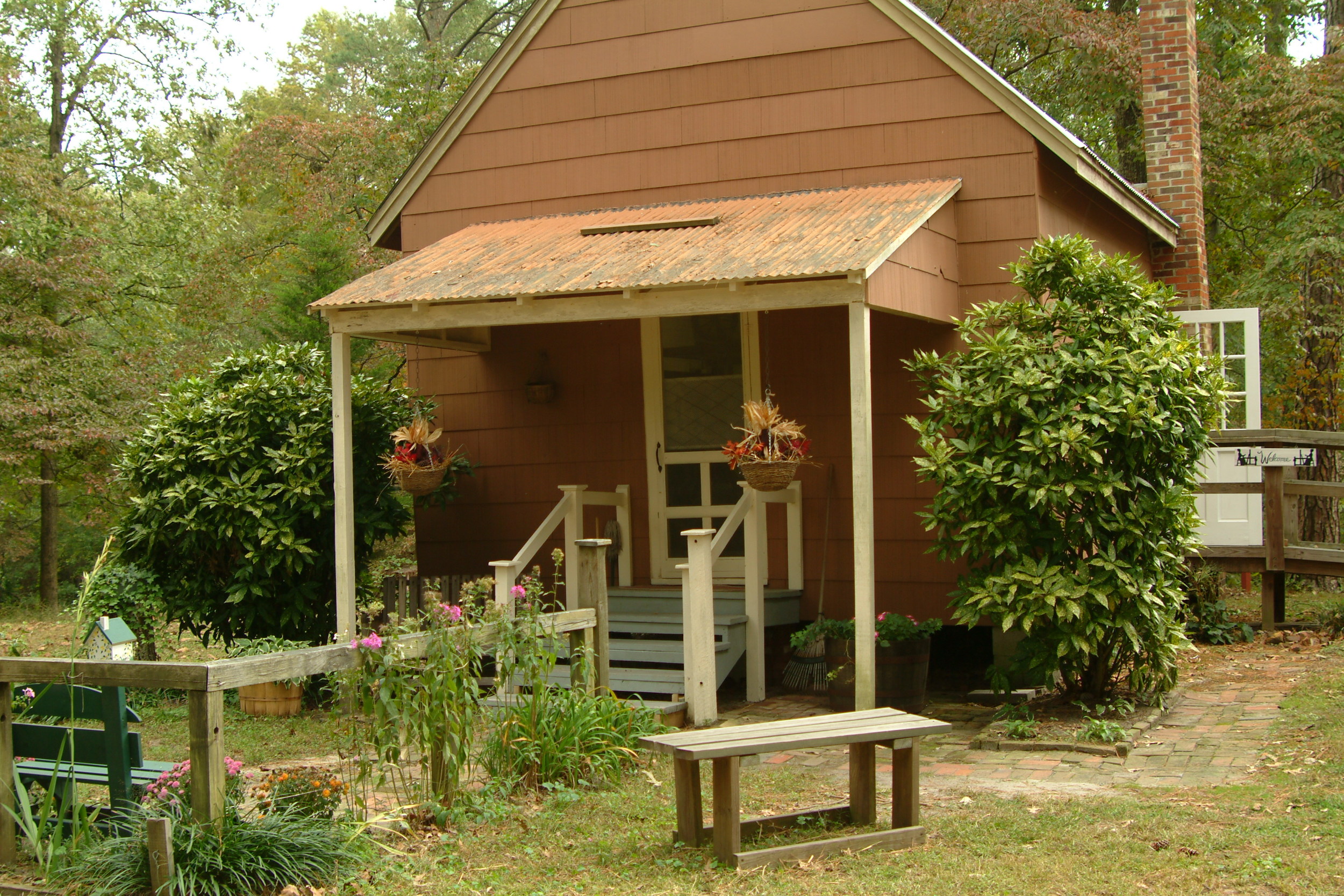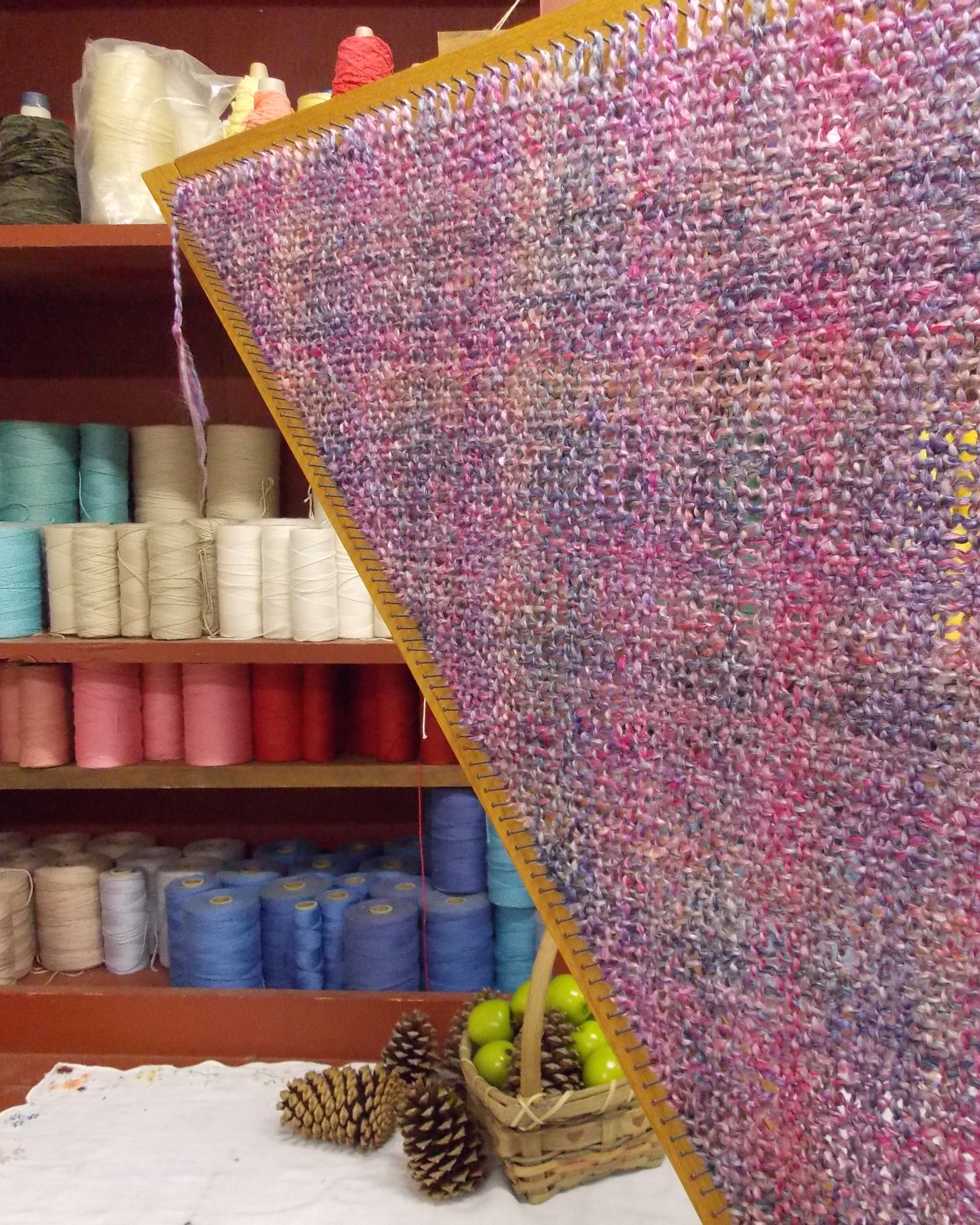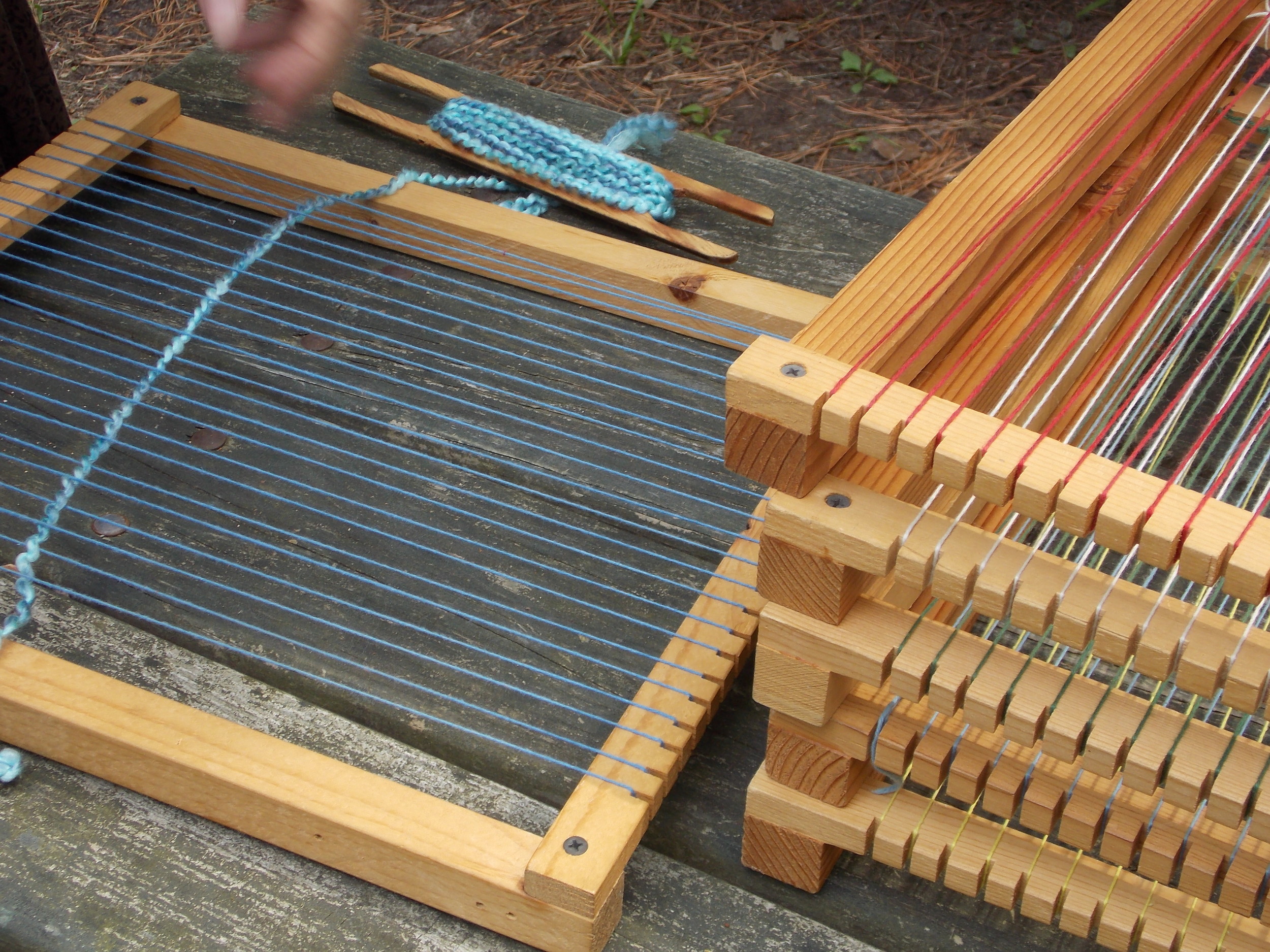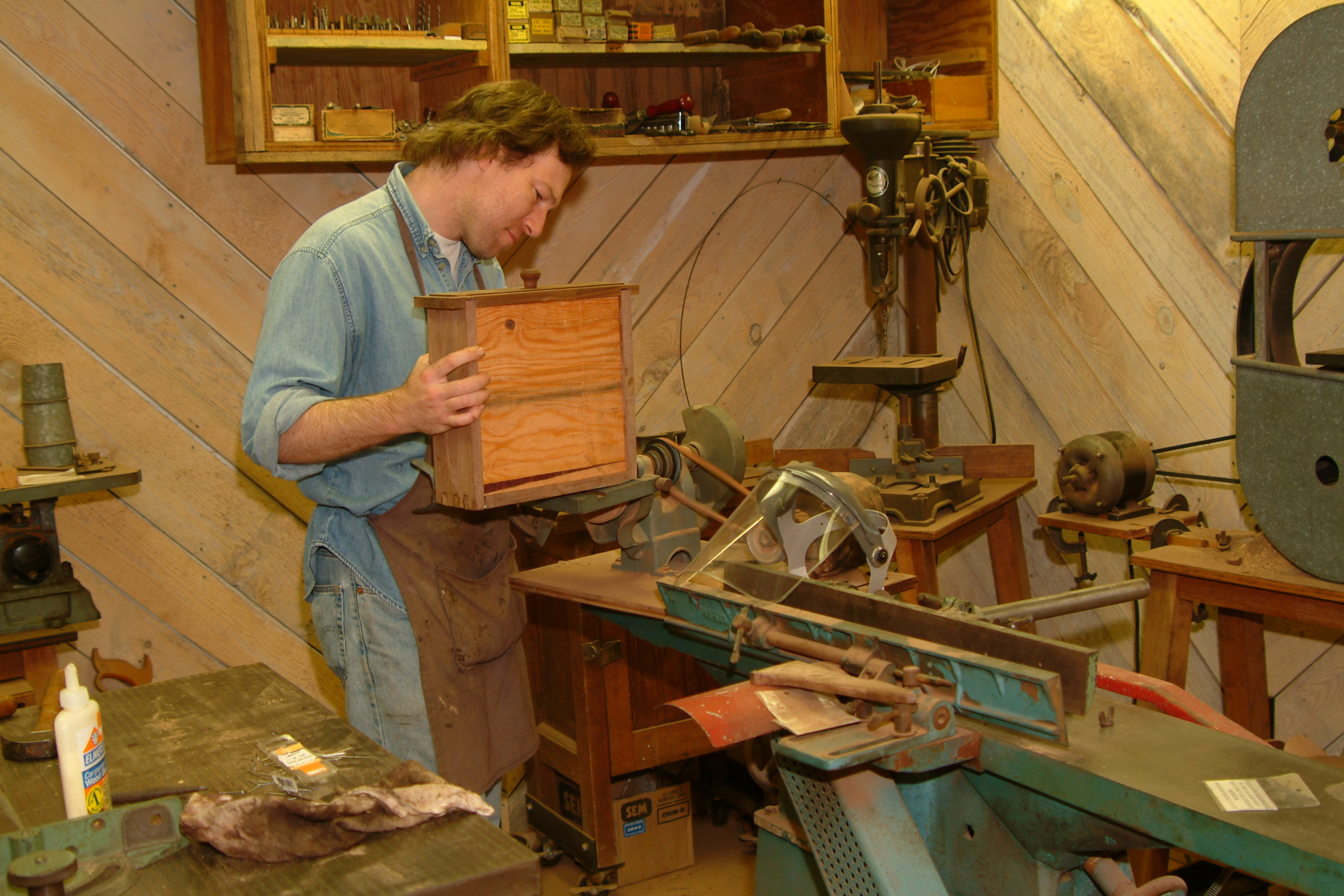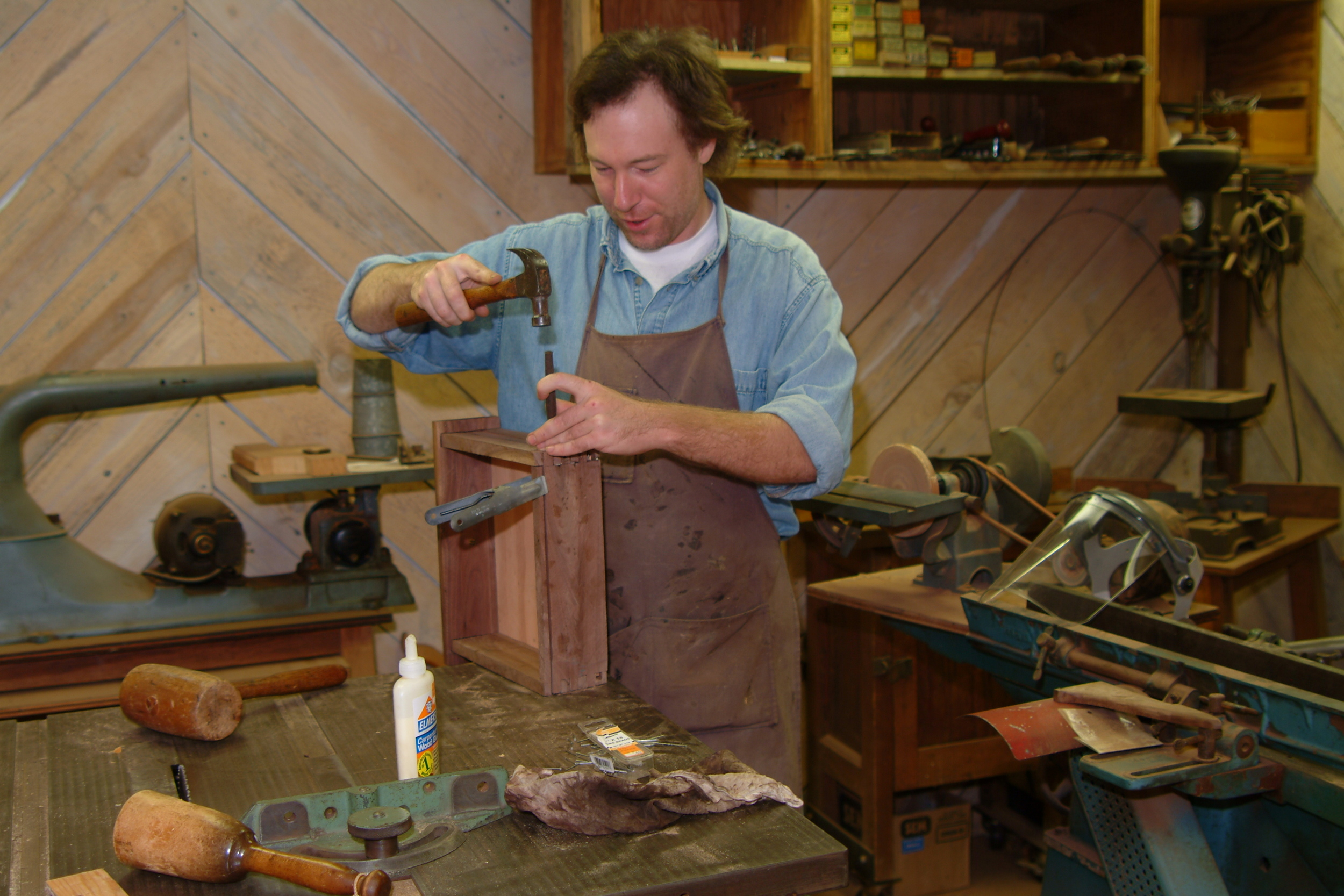Take a Trip Back in Time
Furnace Town Historic Site Map
Nassawango Iron Furnace
National Historic Landmark
As you walk up the ramp to the top of the furnace, look at the carts near the ramp base. Imagine them filled with charcoal, bog iron ore and shells, and then pulled up to the top of the ramp. Look in the mirror at the top of the furnace and imagine interior temperatures of 3000 degrees Fahrenheit.
The Nassawango Iron Furnace was erected in 1830 by the Maryland Iron Company to smelt iron from the bog ore formations in the immediate vicinity. It is the only furnace in Maryland ever to make extensive use of bog ore. It operated only until 1849, and was reported to be in dilapidated condition by 1859.
The furnace produced about 700 tons of iron per year, but the quality and distribution of the bog ore may have caused the several financial failures that the ironworks underwent.
The most significant fact about the furnace is that it made use of hot blast techniques only a few years after the idea was developed in England in 1828-1830. If the Nassawango Furnace was built with the hot blast gear installed from the beginning, and not later converted, it would have to be one of the first hot blast furnaces in America. Even if the equipment were added late in the life of the furnace, it would still qualify as a very early example of the hot blast technology. But further research indicates that the blast apparatus was likely added to the existing stack during a time of ownership change, either in 1837 or 1840.
The Nassawango Iron Furnace Archaeological Site is registered with the National Register of Historic Places, and recognized by the American Society of Mechanical Engineers as a National Historic Mechanical Engineering Landmark.
Blacksmith Shop
The first half of the 19th century is considered by historians to be the “golden age” of American blacksmithing due to the demand for metalwork in newly developing communities on the frontier. Blacksmithing existed within communities large and small in 19th century America. Although each blacksmith’s workshop, metalworking process, and expertise differed in some ways, they all possessed the general ability to fashion a variety of important items out of iron and steel. A Blacksmith would have been essential at Furnace Town in it’s heyday, they would have created and repaired almost all the tools and equipment use to run the Nassawango Iron Furnace. Furnace Town’s Blacksmith shop was donated by Elijah Stanton Adkins in 1980 and was moved to Furnace Town that year.
Blacksmiths living in the 1800s took on the roles of both tradesmen and businessmen to manage successful workshops and provide a variety of services. Townspeople and farmers alike valued the range of skills blacksmiths possessed and relied on them to create the tools and implements necessary for survival.
Today we have a blacksmith guild that uses the Blacksmith Shop at Furnace town, they help fix and make metal items we use here at Furnace Town, as well as making items we sell in our village store.
Broom House
A Rare Gem
The Broom house was originally used to house strawberry pickers in the nineteenth century. In the late 1800s and early 1900s, the building was converted into a broom-making house. The equipment used by our broom makers is original and came with the building when it was donated to Furnace Town. The Kicker Winder is especially rare, and as far as can be determined only a few are left in existence, including one housed in the Smithsonian Institution.
The equipment in the broom house includes a “kicker winder” and a “broom vise” which were used, traditionally by men, in this building to make brooms near the end of the nineteenth century and today are used for standard, child’s and natural handled brooms. There are smaller “winders” which are used to make pot-scrubbers, cake-testers, whiskbrooms, turkey wings and more.
The Broom House was donated by the Banks Family and restored by the Paul M. Jones Foundation, Inc. in 1979-1980.
The Broom House was moved to Furnace Town on January 22, 1980. It was formerly on the property of the late Mr. & Mrs. Richard W. Banks near Bishopville, MD. During Mr. Bank's lifetime, the building was used for the handcrafting of brooms, the repair of clocks and watches, and the repair of shoes -- all by Mr. Banks. The loft often housed strawberry pickers.
The exhibit materials are symbolic of the type of equipment used to make brooms in the early and mid-nineteenth century at Furnace Town. The building and most of its contents are a gift of the heirs of Mr. & Mrs. Banks: Edna Banks Hall, Arthur Banks, Zenia Shipley, Clifton Banks, and Richard Warren Banks.
Farm Implement Building
The Farm Implement Building was donated the Furnace Town Foundation by Fred and Ralph Williams in 1994. The building is of dovetail construction, originally chinked with mud/wattle, and later covered and roofed with cypress shingles. Interior boards appear to be of 12-18” walnut; flooring is pine, varying from 12-20”.
This building is typical of a farm outbuilding, with roughhewn wood and chinking. Items inside are typical of small equipment used on a nineteenth-century farm.
Garden Shed
Mt. Zion One-room Schoolhouse
The one-room school was built in 1869 and closed in 1931 during the superintendence of Arthur C. Humphreys. It was the idea of Dr. Paul Cooper, then Superintendent of Schools, to preserve a one-room school in a central location so that present and future generations of children would know more about school days in the past and the early educational facilities of the county. The school building was owned by Samuel Shockley (a former County Commissioner) who gave it to the Board of Education. It was originally located at Mt. Zion, near Whiton, MD, and moved into Snow Hill in 1959. You can see the picture in one of the scrapbooks to understand the condition of the building (no roof or floor). The building is a symbol of public education in Maryland.
The Worcester County Teacher’s Association, Worcester County Retired Teachers and townspeople contributed toward the restoration of the building, much of which was done by the Board of Education. The school was dedicated on 6 June 1964, on a lot near Snow Hill High School. It was later moved to a location on the corner of the school property because the earlier space was needed for a football field. In 1975 the Worcester County Retired Teachers Association took the restoration as their Bicentennial Project (Heat and air-conditioning added) and a handicapped ramp was installed in 2003 with donated supplies and work provided by the Board of Education. In 2016 the building was moved to Furnace Town.
Museum
The Worcester County Historical Society moved the Nassawango Exhibition Hall and Visitors Center to its present site in 1977. From about 1850 until 1865 it served as a church school and parish house for St. Mary the Virgin Episcopal Church in Pocomoke City, Maryland.
A fine example of rural Gothic revival architecture, it is one of the few remaining buildings of its kind on Maryland’s Eastern Shore. The front section of the building, with its Gothic windows, barrel ceiling and original wainscoting, was either constructed or transported to land deeded to Coventry Parish for the purpose of erecting a school by John McNamarra and his wife, Mary Ann, in 1847 in what was then known as Newtown, now Pocomoke City. In the early 1940’s, the center section was added to the structure to serve as a kitchen for the well-used parish house.
In 1923, following a disastrous fire in Pocomoke City, the little building was pressed into service as a public school and during World War II, it became a USO building, offering hospitality to Navy personnel stationed at nearby Chincoteague Navy Base. After the war, it reverted to being a parish house and was the center of parish life for many years.
Sampson Harmon
The most famous resident of Furnace Town has become Sampson Harmon.
Sampson was born at what was then Nassawango Hills in 1790. He, like his father Levin Harmon, was a free African-American in a time when slavery was the norm. Little is actually known about the life of Sampson, especially his early years. It was always said that he was strong enough to wrestle bears and fast enough to chase down deer. He was very tall, always wore a hat, and never wore shoes.
Sampson was a jack-of-all-trades at the Nassawango Iron Furnace. He helped in the community with whatever he could do. He had a family, but the name of his wife and most of his children is unknown. According to the census of 1840 he and his wife had four children: two boys and two girls. One of the girls' name was Caroline and once she was grown she had at least two daughters of her own, Sophie and Elizabeth. Sampson raised Elizabeth, or Lizzie as she is referred to in the 1870 census at Furnace Town.
After the furnace was abandoned, Sampson continued to live here. He had a small wooden home close to the Manor House and tended a garden where he raised corn. He would barter for supplies from Todd's General Store and nearby Snow Hill. In 1896, the county forced Sampson to move to the Alms House in Snow Hill where he died a year later at the age of 107. His final wish of being buried at the old furnace was never granted and instead he was buried in Snow Hill.
By the 1890s, Sampson was one of the most talked about people in Worcester County. His name was immortalized in The Entailed Hat a novel based at Furnace Town. In the book he is referred to as Sampson Hat and is the manservant of the owner John Custis. For years, many have believed this was the truth, even though the book is historical fiction. The book was written in the 1880s and still remains a widely read work. In 1895, Sampson granted an interview to the local newspaper and talked about certain parts of his life in order to set the record straight that he was not a slave as he was portrayed in the novel.
Old Nazareth Church
The Old Nazareth Church was originally a country Methodist Church from 1874 to the mid-twentieth century. Purnell and Mary Pusey granted Land for the church May 6, 1865 to the Trustees of the Old Nazareth Church. The church was built and put into use in 1874. After the Church ceased to be used by the Methodist Conference, heirs of the original Trustees donated it to Furnace Town Foundation, Inc. The building was moved to Furnace Town in 1980. The Old Nazareth Church site and cemetery are located about five miles west on Old Furnace Toad at the entrance to the Pusey Branch Nature Trail.
Print Shop
A variety of presses are used in the Print Shop to produce broadsides, notices and forms. The printer sets each letter upside down and backward so that the text will be correct once it is printed. Exhibit items include a foot pedal operated platen press, a screw press and proof presses. Wooden type cases have handset metal and wood type. A variety of wood block designs augment the many fonts available. There are composing stones, galley trays, spacers, quoin keys and furniture cabinets.
Harrison House
The Harrison Family gave this building to Furnace Town in 1995. It was located just south of Berlin on Rt. 113, and had been a tenant house. Inspection prior to moving revealed severe damage to a nineteenth-century addition, so that only this eighteenth-century was moved.
All original wood in the building is hand-worked and all original nails are hand-wrought. The floor framing and standing frame is a mix of oak, black gum and chestnut, pit sawn and hand hewn. The windowsills are oak. All original framing members are mortised. Corner posts are diagonally braced.
Originally, the floor was insulated with either wood shavings or pine needles. The floor was stripped off with laths, the nails of which are still present under the floor framing.
The roof framing was 3” x 3” oak with black gum, hand hewn and covered with hand-split cypress shakes. Due to extensive weather damage, the cypress shakes were removed prior to moving the house and replaced with the current tin roof. Dormers were added to allow light and height for the second floor.
Enough of the original beaded clapboard was saved to cover the west or front of the building. These pieces were hand-riven cypress and joined on frames with a long scarf joint. Extensive interior restoration resulted in saving some of the original black gum beaded ceiling beams. Original plaster and yellow pine lath was riven and fastened with wrought nails. The winding stairway and under-stair door are original and show evidence of earlier fittings and refittings. Penciled numerals on closet door panels were revealed during refurbishing.
Weave House
Two historic treadle looms almost fill the Weaver’s House, which includes a warping board, triangle loom, carders and more tools of the weaving trade. Both looms are used in making rugs, table runners, placemats, hot mats, mug rugs and tote bags. The triangle loom is used to make shawls.
Woodworkers Shop
Lester D. Shockley donated the building, a former dwelling dating to the mid-nineteenth century. Dating from about 1850, the oldest part of the structure is supported by hand-hewn sills. An addition was completed at the turn of the century completing the building you see today. The Snow Hill Soroptomist Club provided a brick pier foundation. The Associated Builders and Contractors accepted the restoration of the building as a community service project.
Ernest Glaser, born in Germany, was a master craftsman who taught in New Jersey and moved to Snow Hill in his later years. His furniture was much sought after, and his Snow Hill workshop was featured in the June 1982 issue of Popular Mechanics. Just prior to his death, he donated everything in his woodworker shop that included over 3000 historic tools.
Ernest Glaser
Ernest Glaser, born in 1907, was schooled in his native Germany under the European Guild system. Walking from city to city, studying and apprenticing, he became a master furniture maker. In 1928 he emigrated to North Plainsfield, NJ. Mr. Glaser received a degree in education from Rutgers University, and both he and his wife taught at North Plainsfield.
Mr. Glaser taught industrial arts, making one-of-a-kind signed furniture pieces on the side, all of museum quality. In 1964, the couple retired to Snow Hill, where he continued to fill a long list of custom orders. He possessed an ability to reproduce period pieces accurately and beautifully, using only a photograph. He lamented the passing of the day of the master craftsman, after seeing too many factory-made of pieces of cheaper materials. In 1979 he said: “All I hope now is that the Lord gives me a little more time so that I can finish up my lumber pile.” He was able to do almost that.
In 1993, a year before his death, Mr. Glaser donated all of his woodworking tools and equipment – in essence his shop – to Furnace Town with one requirement: that it be a working shop, not just a static collection. Today the shop is a tribute to Mr. Glaser’s faith in the project, showing and using early power tools as well as the hand tools of a master craftsman and a gentleman.


